We had another visitor in our shower this morning: a frog. It was only about 1-inch high, so Michael scooped it up in a feminine-hygiene disposal bag and tossed it out the front door. Hopefully, it will enjoy the rain and find more flies to catch outside than in our bathroom. Hopefully.
This morning the Discovery XA group was scheduled to eat breakfast at 6:00 a.m. before going out for the game drive. Usually we try to get underway by dawn and then spend about two hours driving around the reserve before returning for breakfast. Today, however, Jim allowed more drive time so we could go farther afield, and told us to be prepared to spend at least six hours away from camp. Accordingly, we filled our plates with plenty of protein (Lynn was dismayed that the chef at the Egg Station insisted on overcooking her fried eggs, absolutely refusing to give her the type of runny yolk she prefers) and avoided drinking too much juice because we weren’t sure when or where we would be able to take a bathroom break.
We left at 6:30 a.m., riding in Anthony’s vehicle along with Eva and Barry. It was a gray, drizzly morning and, after last night’s heavy rains, the unpaved tracks were slick whether we were driving through mud or across flattened grass. As the vehicle bumped over rocks and slipped down muddy slopes, Barry remarked: “This is a lot more fun than when it’s dry!”
From behind the wheel, Anthony wrily replied: “… when you’re being driven.”
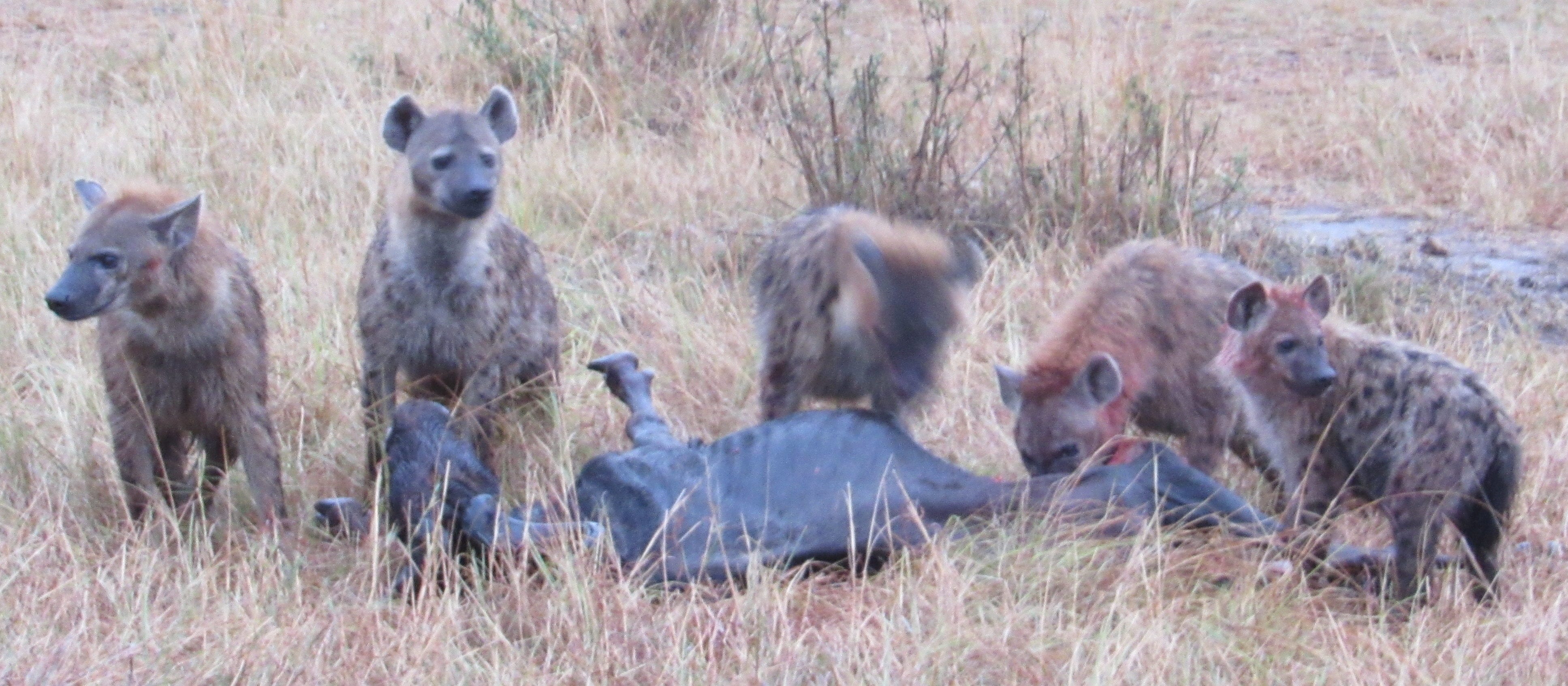
Hyenas protecting their recent kill
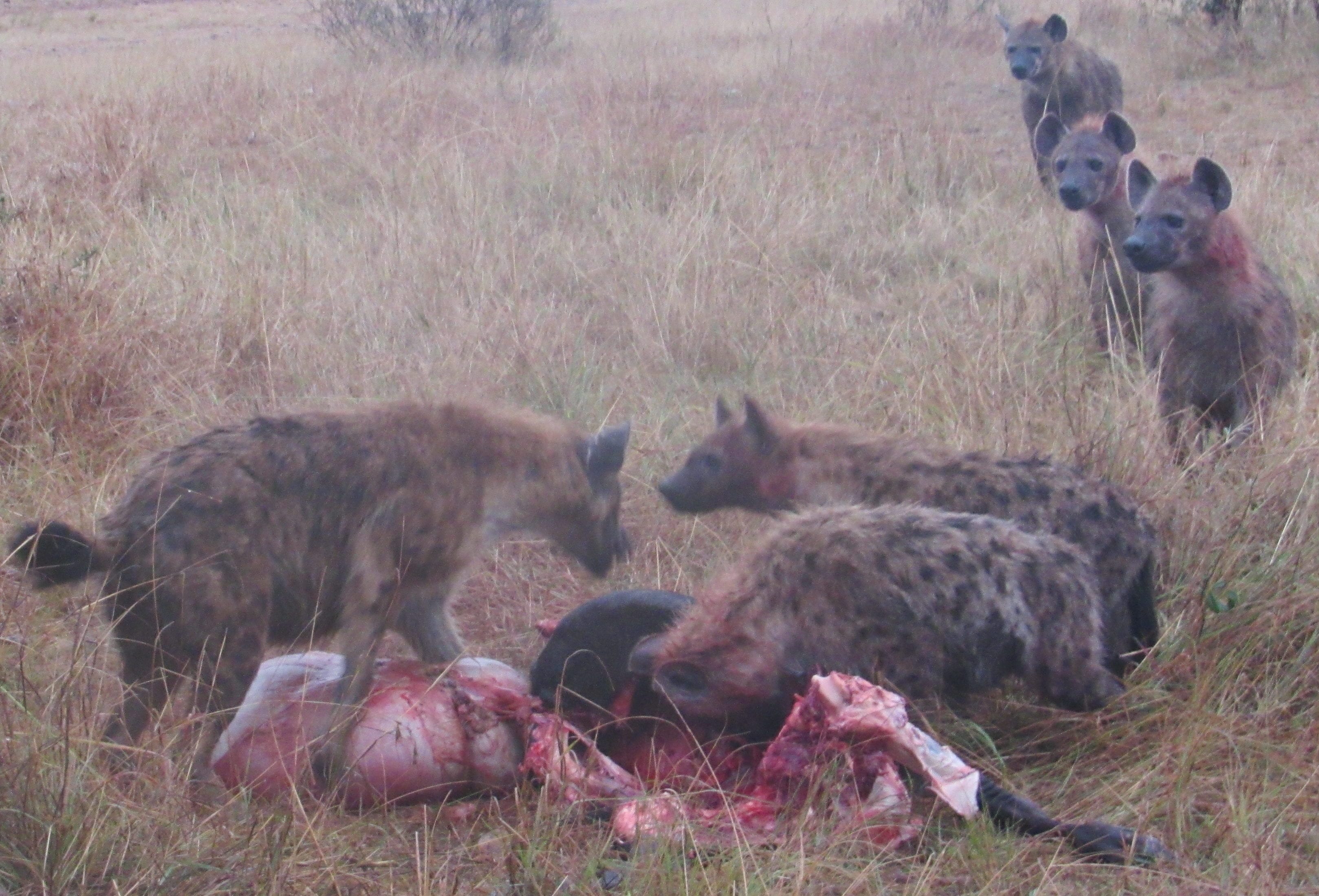
Members of the pack form a line, waiting for their turn at the feast
Through the mist we spied a pack of hyenas devouring a wildebeest. Hyenas have a reputation as scavengers who either rob other predators of their prizes or show up at the end of the feast to gnaw on the bones, but they should be better known as skilled hunters who employ teamwork to provide food for their families. In this case, it appeared that the hyenas had indeed attacked the wildebeest on their own, because not much had been consumed when we arrived. We counted at least fourteen individuals taking part in the meal, four or five at a time. Like the cheetah we had seen yesterday, they were careful not to rupture the stomach.
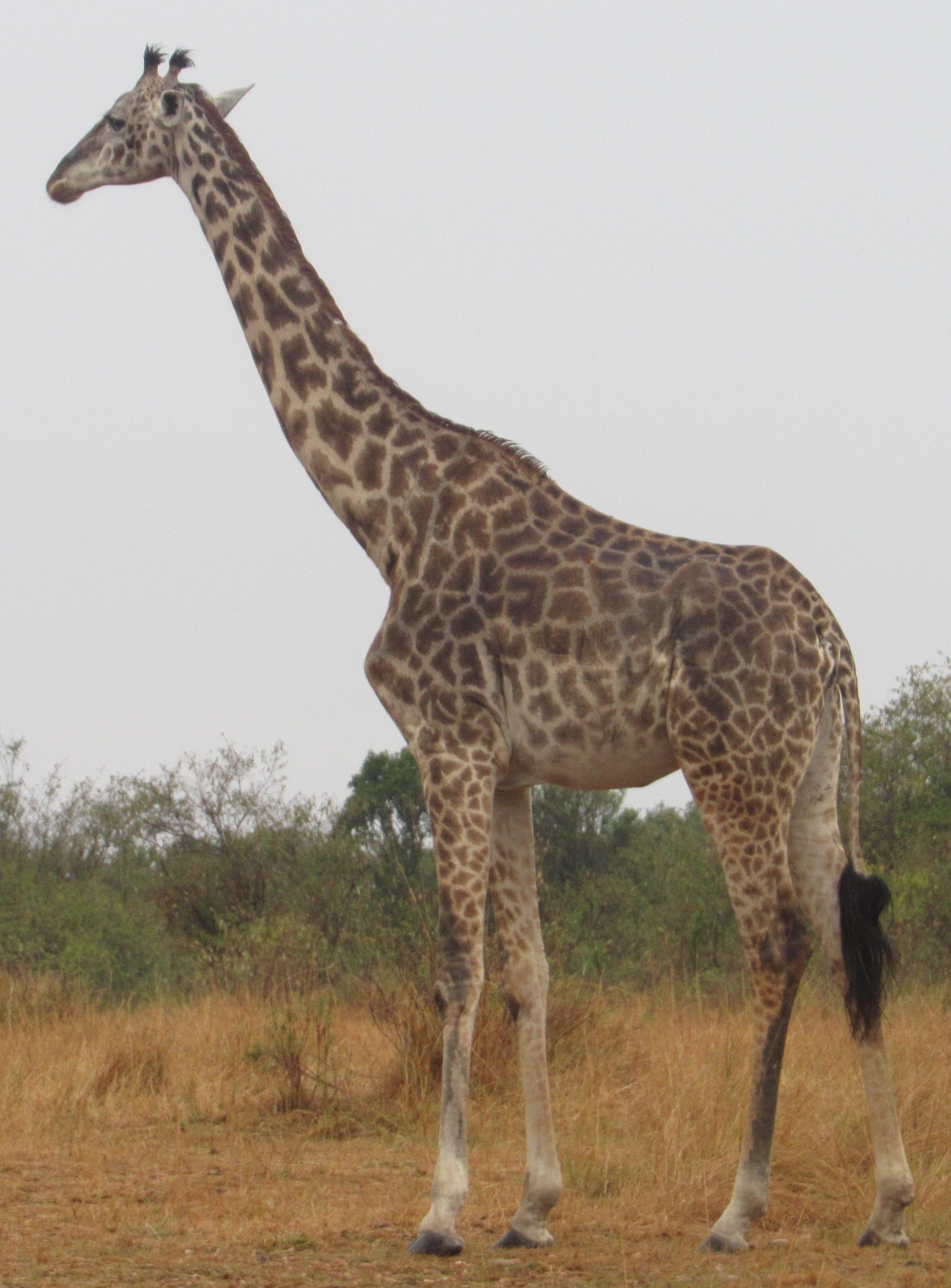
Maasai giraffe

This morning we encountered some Maasai giraffes that allowed us to get closer to them than we had been able to previously. A tower of them was striding among zebras, perhaps keeping watch so their striped companions could graze in peace.
Through the low-hanging mist, we could vaguely make out a couple of hot air balloons floating over them. We wondered how much their occupants could see with such low visibility today. We also wondered what they would do if the balloon ran out of gas and drifted down into the path of a hungry lion. Anthony assured us that local balloon operators know how to avoid such predicaments.
A while later we became the audience at a melodrama played out among five lions. Four of them–three young males and one female, probably siblings–were slowly but relentlessly pursuing another female, uttering menacing low roars and apparently trying to drive her away. The feline non grata appeared to be either very full from a recent meal, or pregnant. Anthony devised a plausible plot line for this play: The second lioness, impregnated by an aging male, had been forced to flee her own pride when a younger male successfully challenged the older lion for dominance, and then threatened to kill any of his predecessor’s cubs. (This, we have been told, is not an uncommon occurrence.) The hapless lioness, desperate to save her unborn litter, hid for several days, but hunger finally forced her out where she could hunt. Unfortunately, she ventured into territory claimed by another pride, and now this patrol is enforcing its boundaries.
Eventually, the four siblings roamed off in different directions. When last we saw the fugitive, she was running over a distant rise, flanked by two side-striped jackals. We were too far away to hear any offstage struggle, but we fear that the lioness was destined for a tragic end.

Rain brings greener pastures to the wildebeests
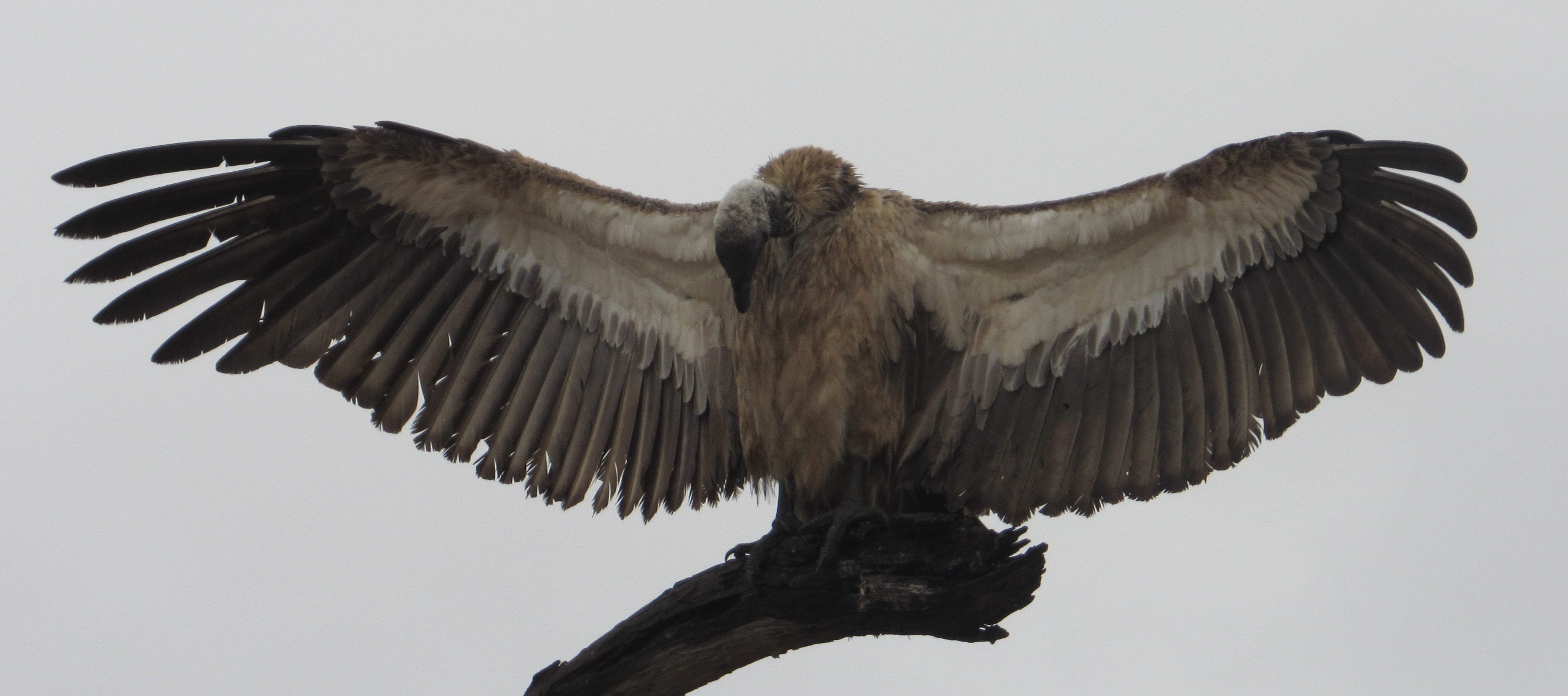
Rüppell’s griffon vulture
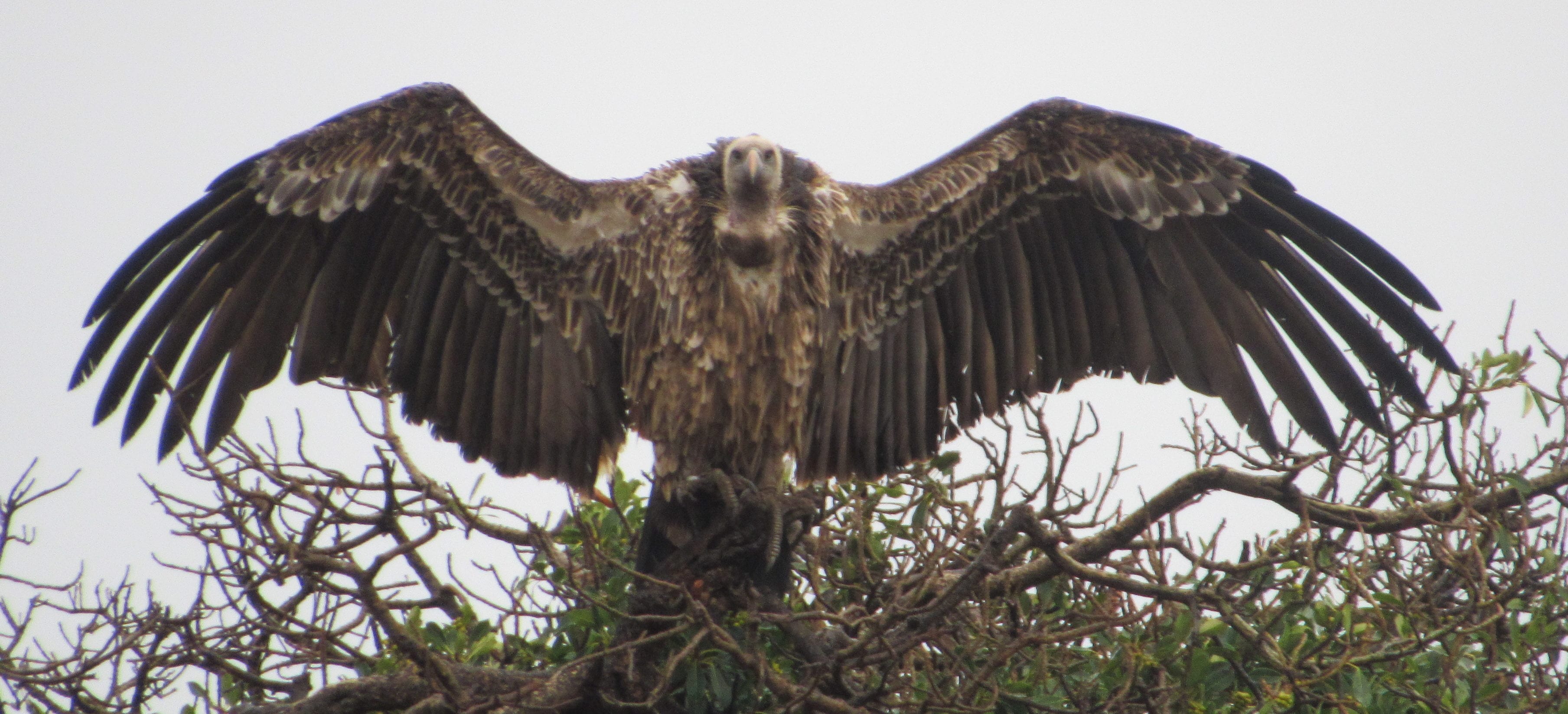
Hooded vulture

God and his companions probably had a lot of fun designing the ugliest animal on the face of the earth. According to a popular joke, the wildebeest was created from an assortment of spare parts
Anthony started up the engine and began driving toward the hills. As we drove through acres and acres of grassland, we noticed that the rain was already turning the landscape greener than it had been yesterday. We also noticed a lot of big birds perched in the treetops as well as on the ground with their wings spread wide: “They’re drying them,” Anthony explained. Another consequence of the rain, Anthony pointed out, is that the wildebeests are now less likely to go looking for greener pastures on the other side of the river, so we are less likely to be able to see a large herd cross.
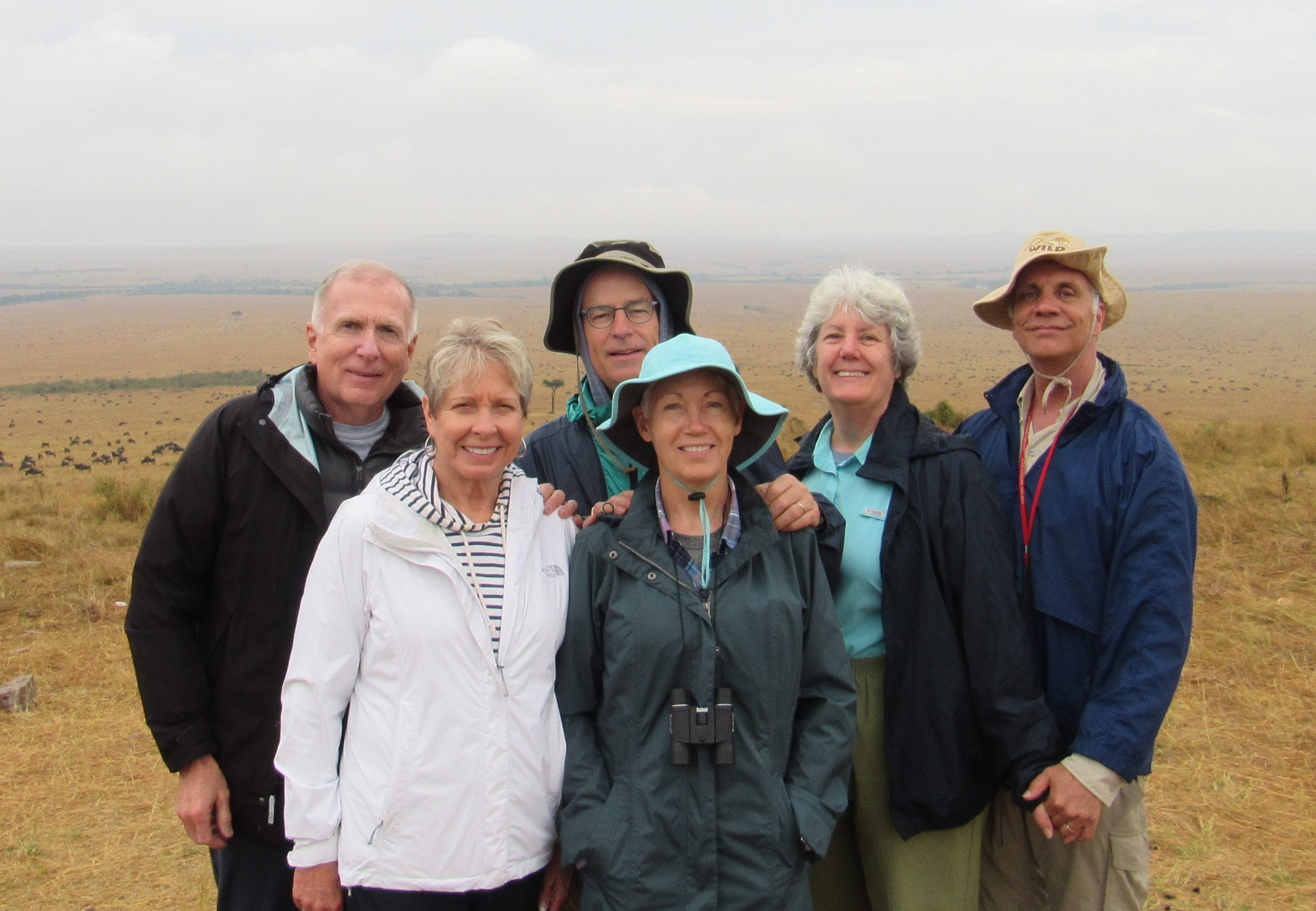
Eric, Pam, Michael, Nancy, Lynn and Mark atop the highest point in the Maasai Mara. That’s Tanzania in the distance behind us
About 8:30 a.m. the Discovery XA group began to convene at the top of a hill that commanded a wide view of the Mara Triangle and beyond, into Tanzania and the Serengeti. With no wildlife other than birds and insects nearby, we were able to get out of our vehicles to stretch our legs–and use the cover of some dense shrubbery to relieve our bladders. From the number of used tissues we saw on the ground and caught among the leaves, we figured that our group was not the first to use this spot for the same purpose.
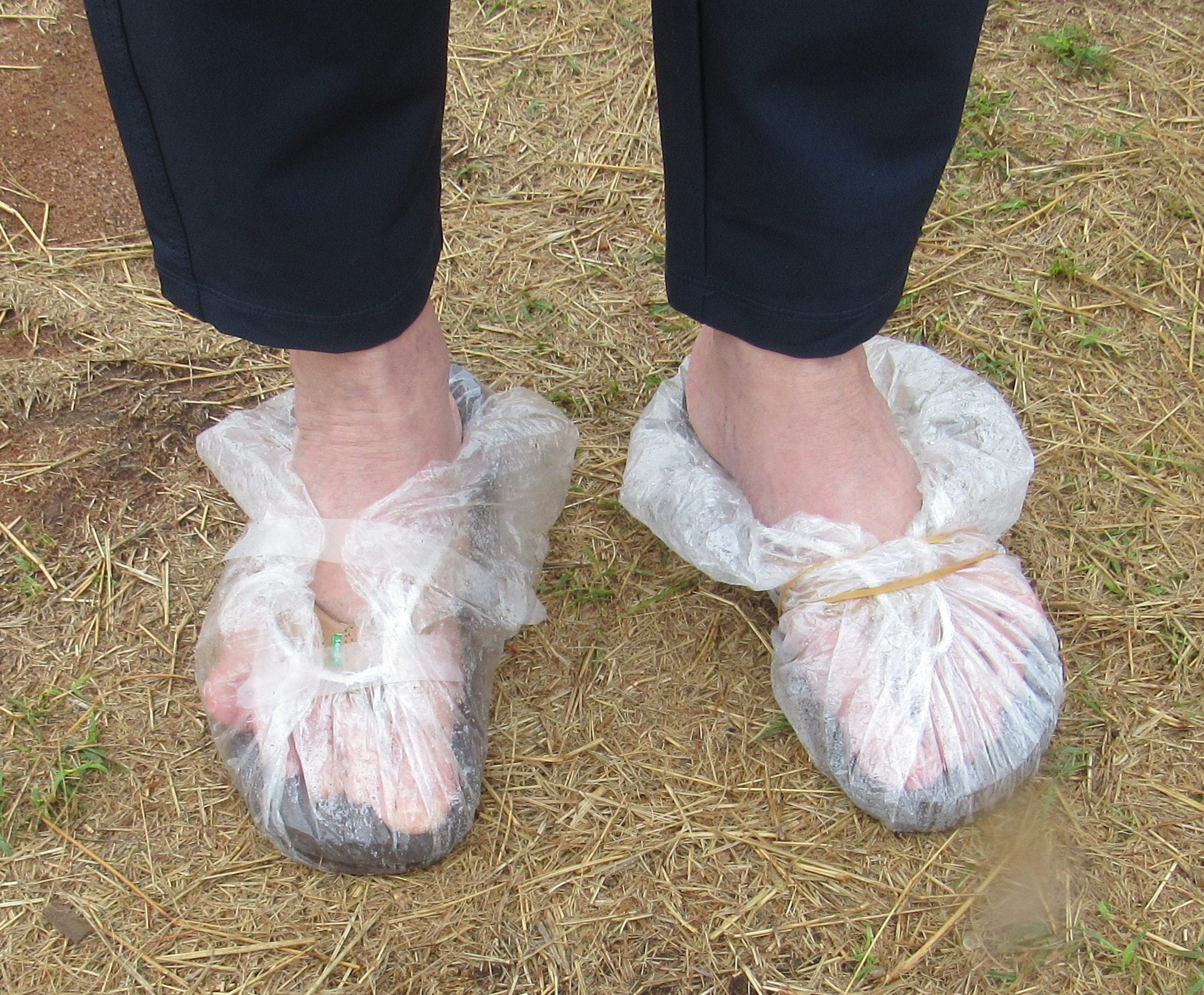
Pam’s creative footwear
The rain had let up but it was windy on the hilltop, so we kept our jackets on. Pam had come better prepared with some water-resistant layers today. This morning, when she found that the shoes she had had on during yesterday’s downpour were still completely soaked, and not wanting her other pair to end up in the same condition today, she came up with an ingenious solution: she put on flip-flops and then wrapped each foot in a shower cap, secured with strips of plastic and a rubber band. Everyone in the group was highly impressed with Pam’s resourcefulness!
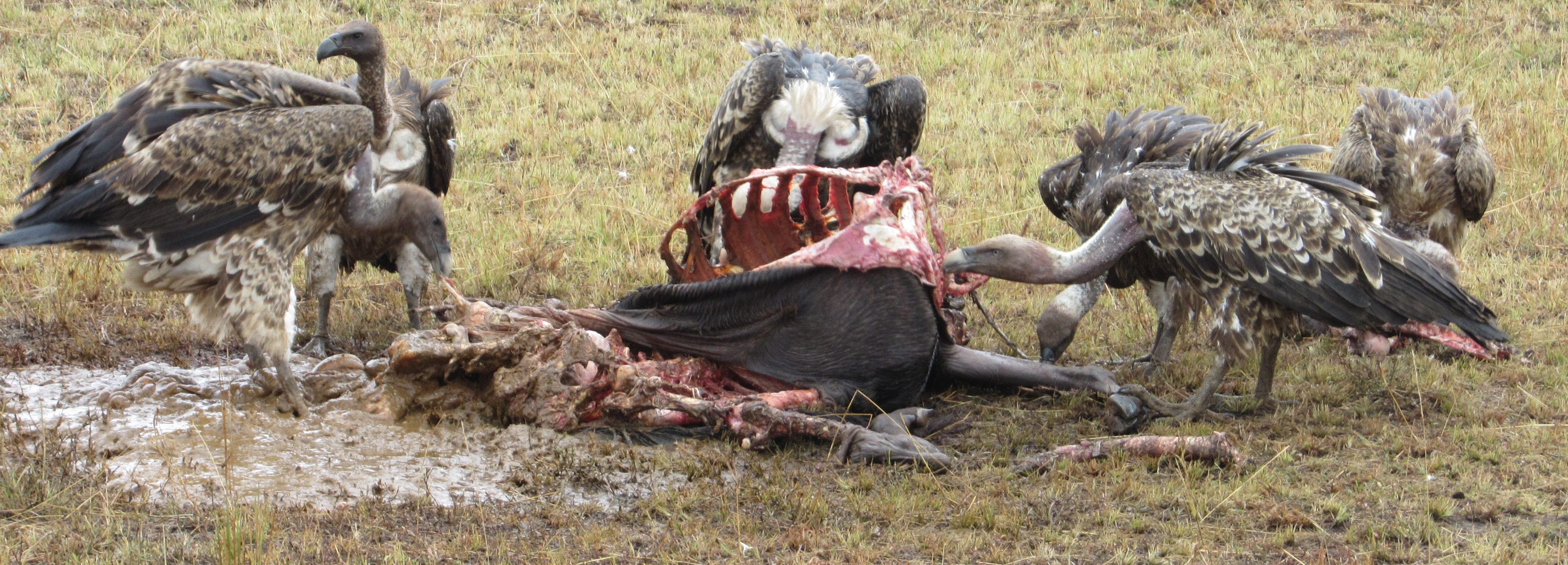
Rüppell’s griffon vultures pick over the wildebeest killed earlier by a pack of hyenas
Later, we passed by what may have been the same wildebeest carcass the hyenas were working on earlier, but now a wake of Rüppell’s griffon vultures had taken their place.
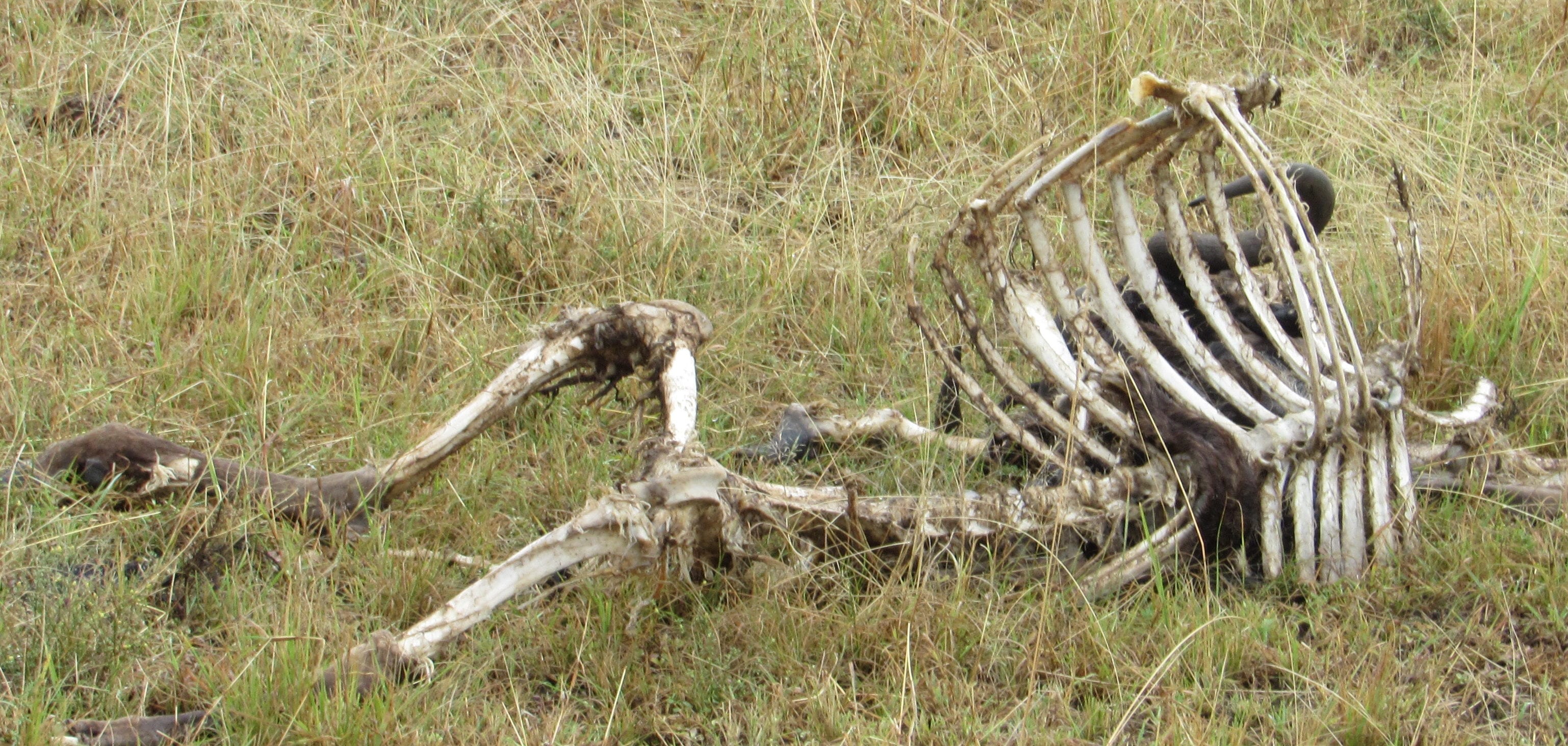
. . . and they licked the platter clean
A hundred meters or so beyond that, we could see what was left of a wildebeest after everyone had had their fill: nothing but bare bones and horns. Hyenas have unique carnassial teeth at the back of their jaws that are capable of crushing bone, and indeed they often consume so many bones that their feces turn white. However, with so much fresh meat available right now the hyenas must not have felt the need to devour every last scrap of wildebeest tissue.

Clearly, none of these lions presented any immediate danger to the wildebeests, but they had positioned themselves in a place that prevented the herd from easily reaching the river
Another quartet of lions we passed apparently had been well satisfied by their last meal and were sleeping it off. The male was breathing so heavily that he might have been snoring. The group was positioned between a herd of wildebeests and the river, so it was unlikely that that particular herd would entertain us with a crossing any time soon. Actually, we didn’t see any herds in the vicinity of the river the rest of the morning, but a few wildebeests found a different way to entertain us: they demonstrated how to mate while on the move. (We would say that wildebeest bulls definitely lack finesse.)
With the longer time allotted to this morning’s drive and–so far–no need for our driver to race across the reserve so we wouldn’t miss seeing something extraordinary, we took the opportunity to ask Anthony to describe daily life among Kenya’s middle class. We assume that Discovery XA’s drivers fit in this socioeconomic stratum: when they are not on safari, they all live in Nairobi or one of its suburbs, most of them have college degrees, and obviously all have steady jobs. Four of the six currently with us are full-time employees of Discovery Expeditions and Adventures, so even though the Gees do not offer tours to Africa year-round, they keep their drivers and equipment working on contract for other agencies in between–and Jim is committed to paying them enough to provide well for their families.
All of our drivers except Steven are married and have children. (You may recall that Anthony had already told us how he and his wife met.) Anthony describes a typical middle-class Kenyan family as having two parents and maybe three children. Both parents are employed outside the home, so they generally have a live-in nanny–a young woman who has come to the city from a very rural area, seeking work and a chance to improve her lot, and who is satisfied with relatively low pay. The family rents a five-room unit in an apartment complex in a reasonably safe neighborhood, or perhaps a small brick house. They have electricity and indoor plumbing, and basic appliances like a stove and refrigerator. (Anthony’s wife was thrilled when they recently acquired their own washing machine.) The typical family owns a car, and both parents drive. On weekends and holidays, they often visit extended family members still living in the rural villages that many of them grew up in, but in recent years, it has become more common for middle-class Kenyans to take actual vacations, traveling to coastal resorts or even going on safaris. Anthony told us that middle-class city-dwellers (there is virtually no middle class outside Nairobi and Mombasa, Kenya’s major seaport) have access to adequate medical care in a combination of public and private facilities. Most primary care is provided by nurse practitioners because doctors are in short supply.
Although the national government provides free primary and secondary education to all its citizens, most middle-class parents prefer and can afford to send their children to private day schools. Anthony explained that, just as in the U.S., Kenya’s private schools cover the spectrum from basic church-run institutions to chi-chi boarding schools favored by the very rich. All schools are conducted in English, so because middle-class children have grown up in urban areas where English is widely spoken, they begin school with that advantage over children from rural villages where exposure to English is much more limited. Kids who come to school speaking only their tribal language thus have to focus their immediate efforts on learning English, creating a situation that (according to Anthony) puts some of them permanently behind their classmates. In addition to English language and literature courses, all students are required to take similar courses in Kiswahili–yet another tongue to learn. Other required courses are math, science, and “arts,” which includes history and geography as well as cultural arts.
Anthony told us that the Kenyan education system is currently in transition from the traditional 8‒4‒4 model (eight years of primary school, four years of secondary school, and four years of university study) to a 2‒6‒3‒3‒3 model in which students are evaluated more frequently, and the program they will enter as they move to the next level is no longer determined by a single exam.
Our lesson in Kenyan culture was interrupted several times as we stopped to observe a variety of animals, including a lot of lazy lions. It has become obvious to us that lions really do rule the reserve. We’re not sure how the term pride came into usage as the collective noun for a group of them, but it certainly does seem to apply. To describe lions as smug or arrogant is probably too strong, but they definitely exude confidence in their own superiority. With the exception of the fugitive female we saw earlier today, we have never seen a lion betray any sign of fear or apprehension toward us or toward other animals. Perhaps the best way to describe their attitude is “entitled”–not so very different from the way we first-world tourists feel here in Kenya.
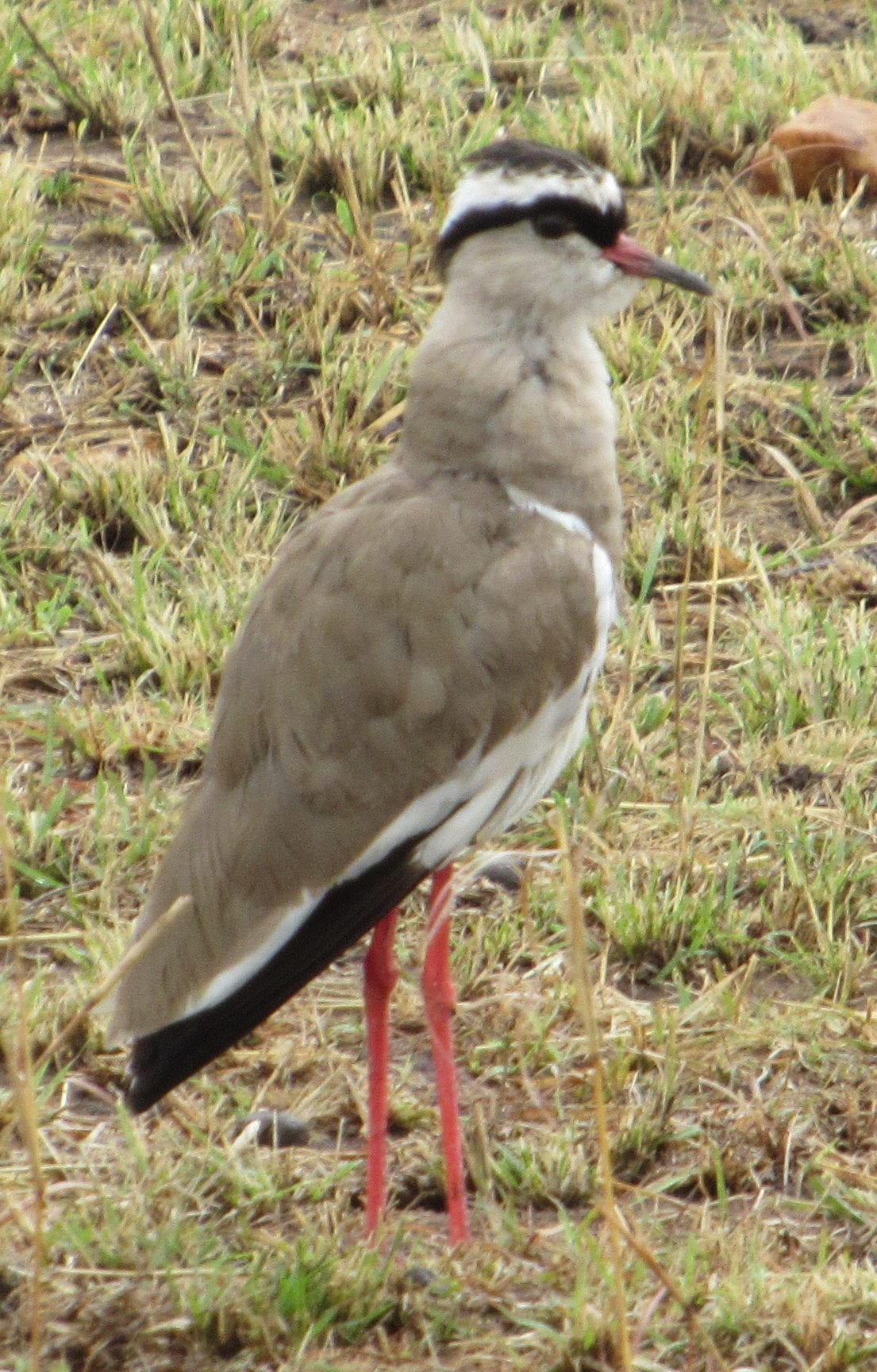
Crowned plover
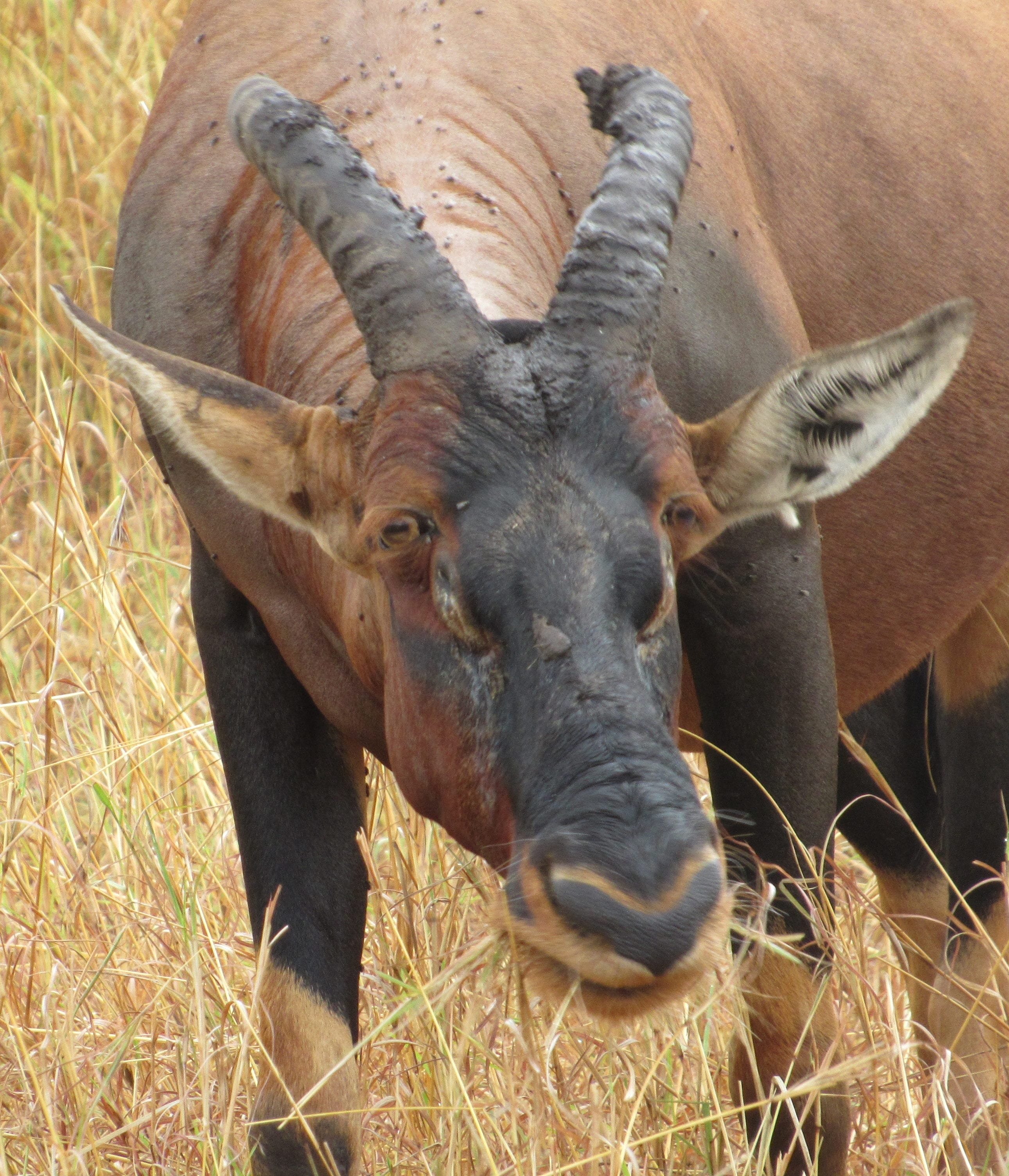
Topi, up close and personal
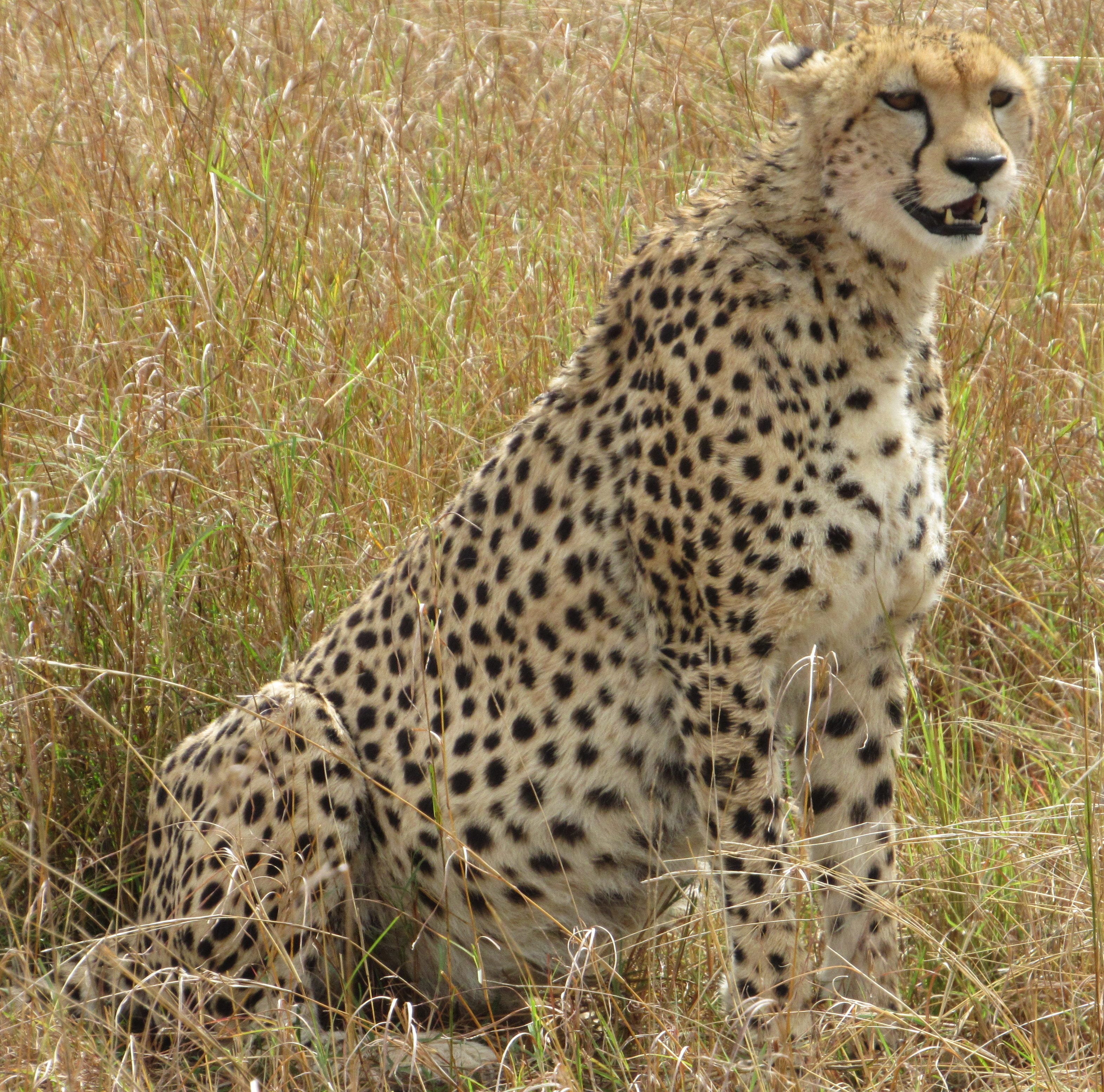
This cheetah had been hiding under a bush, but obligingly rose and came into the light so we could take its photo
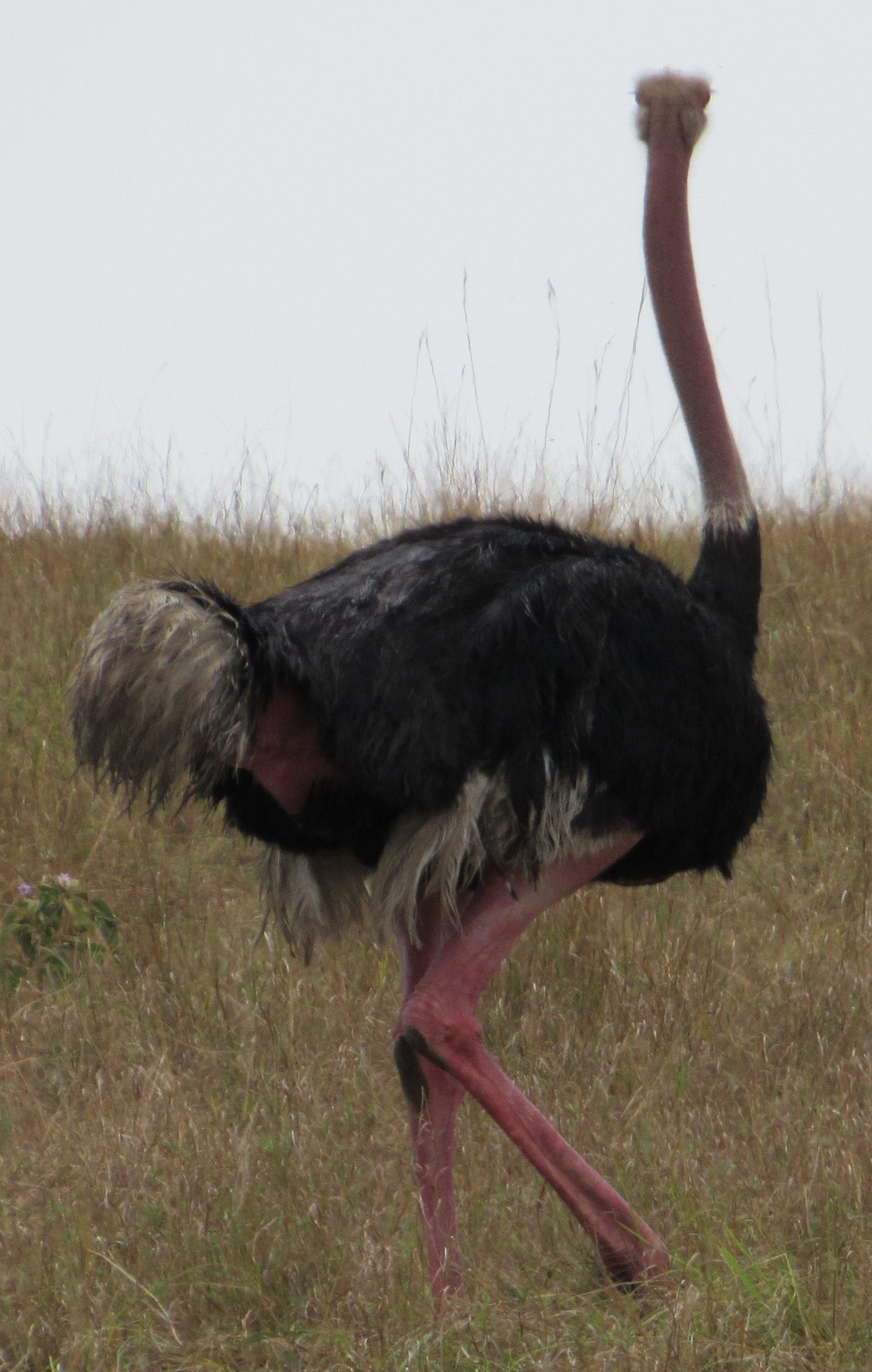
Male Maasai ostrich

We can only speculate about how this young lion lost the tip of his tail
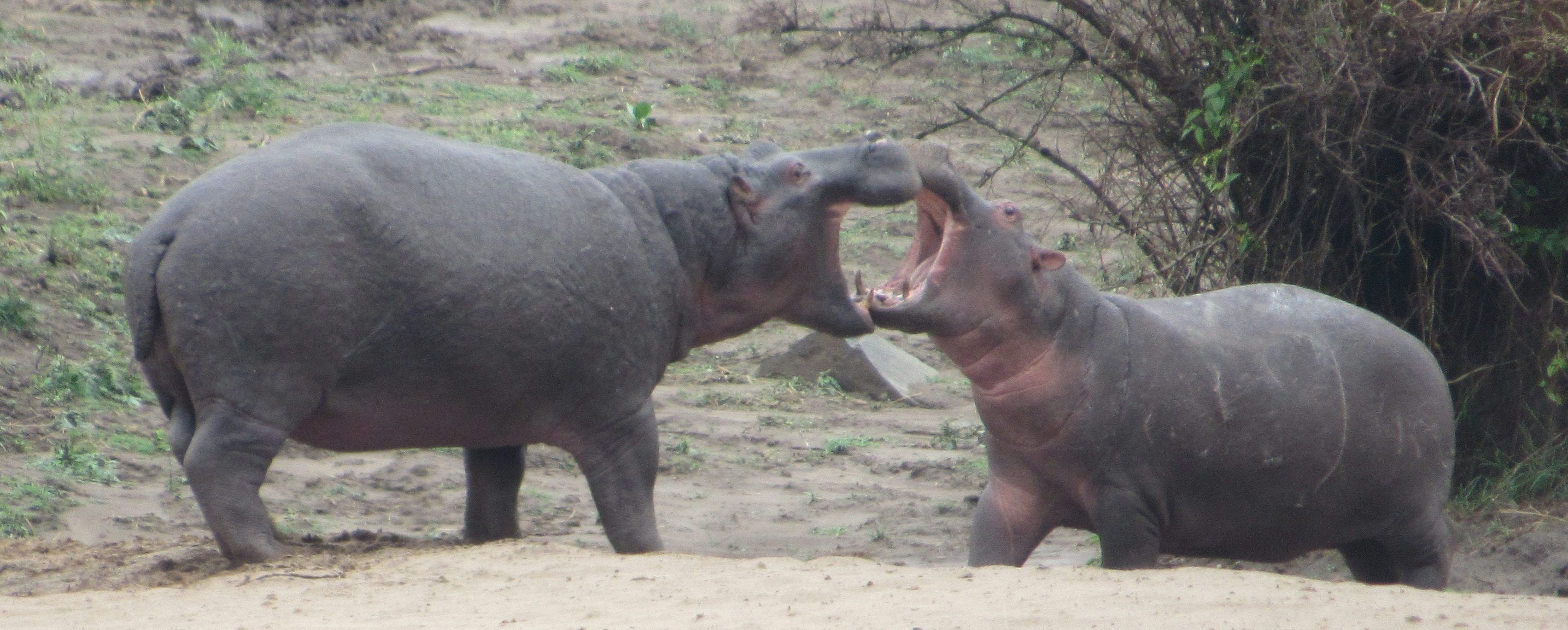
While they played, these young hippos were learning how to use their jaws as weapons
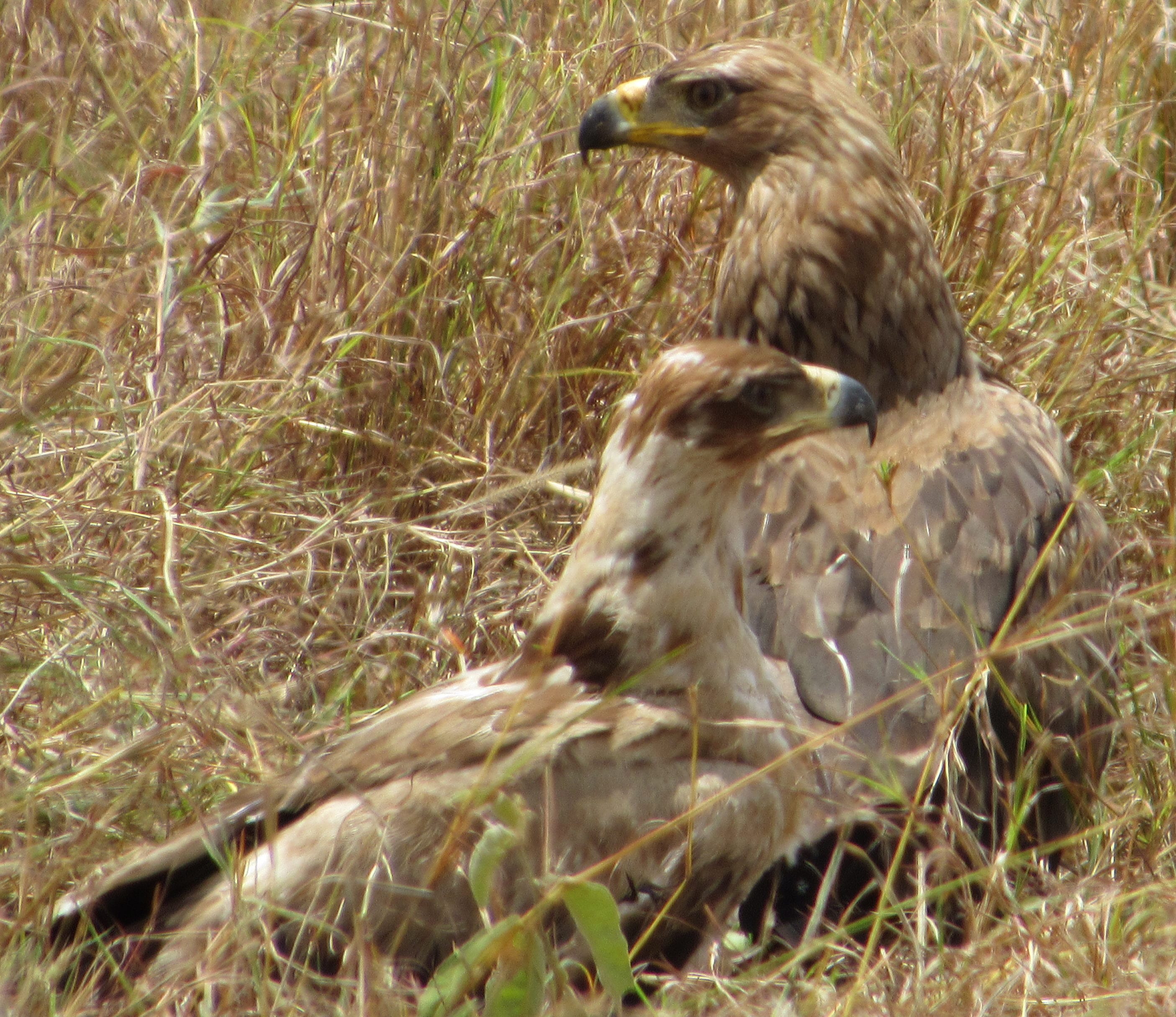
A juvenile tawny eagle fluttering in the grass with its mother
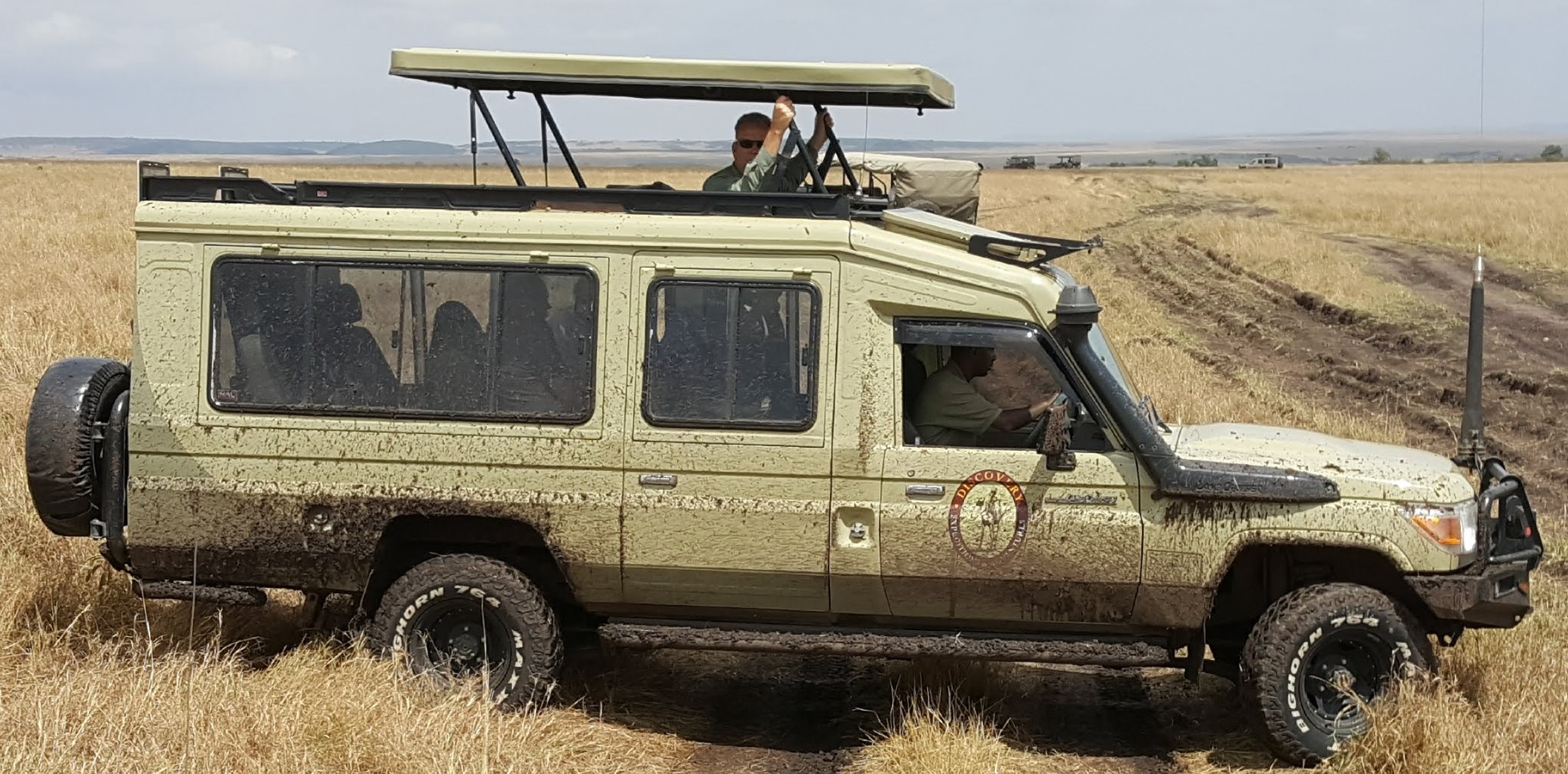
All our vehicles were similarly mud-spattered today. Eventually, the rain ended and the sun came out about mid-morning
Back at the camp for lunch, we enjoyed talking with the members of our group with whom we have not had the pleasure of sharing a game drive.
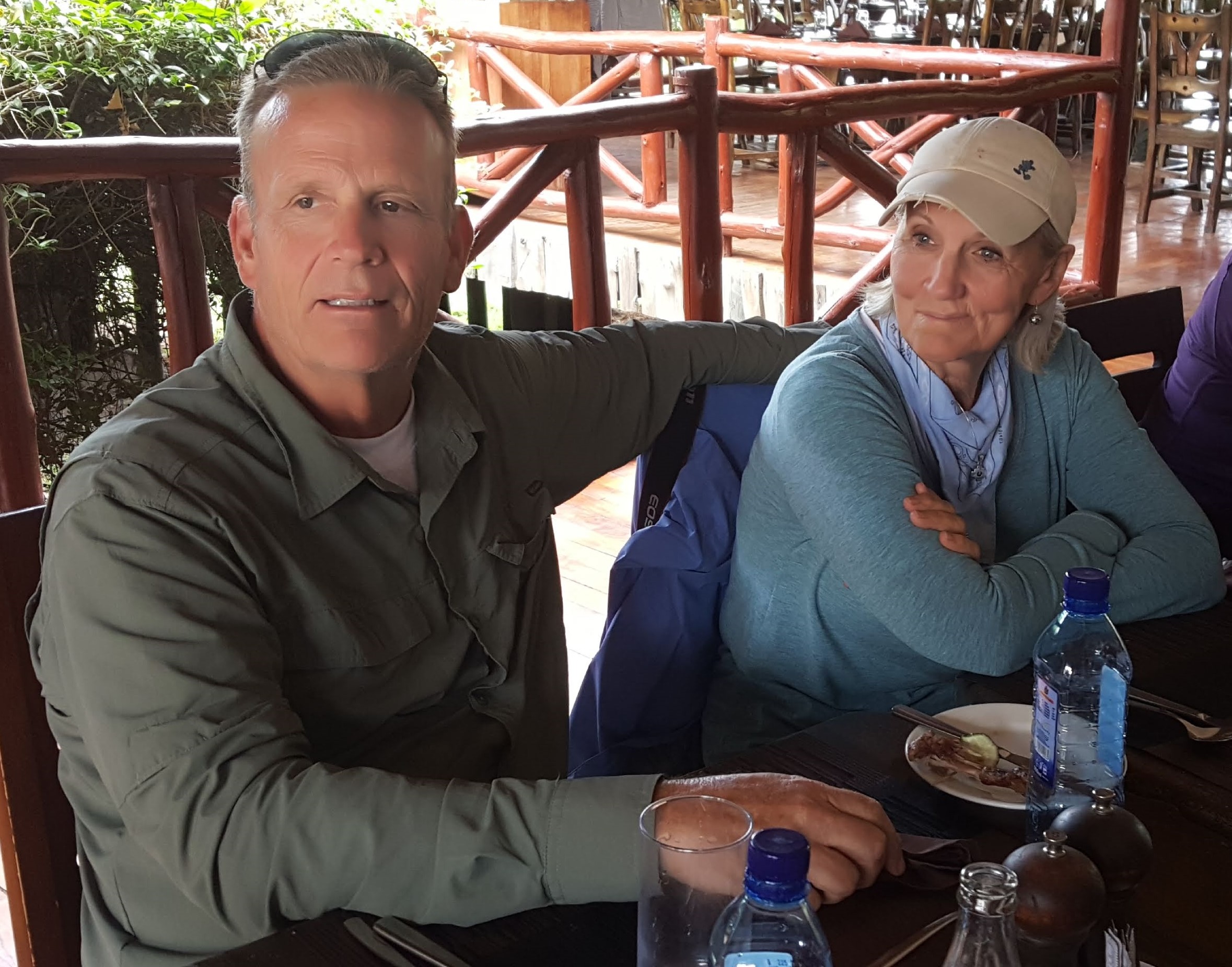
Paul and Jennifer
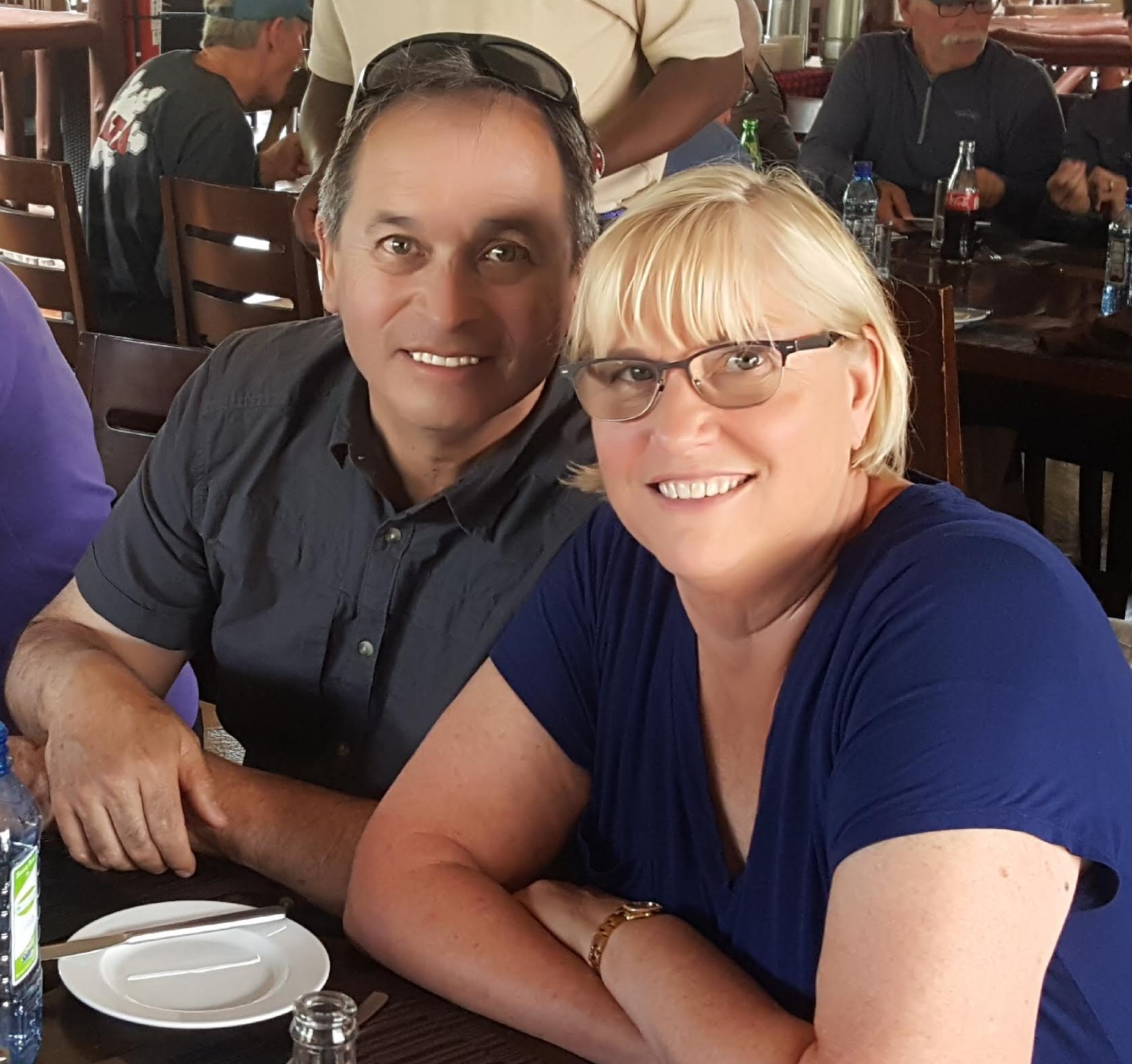
Mike and Vicky
Paul & Jen and Mike & Vicky used to live in the same Northern California community; they came on this tour specifically so they could reconnect after Mike & Vicky moved away from the old neighborhood, so the four of them have always formed their own game-drive team.
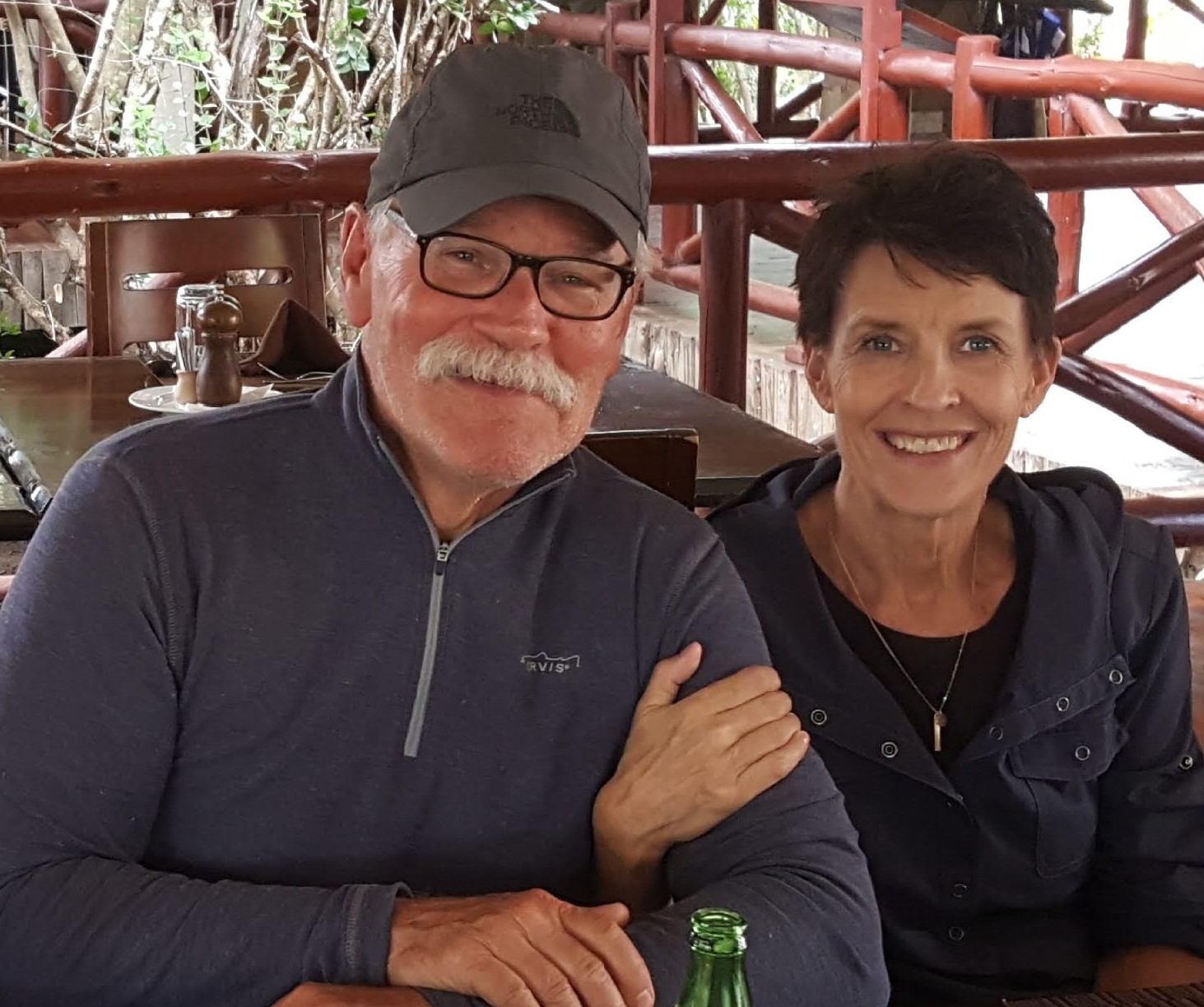
Tom and Kathy
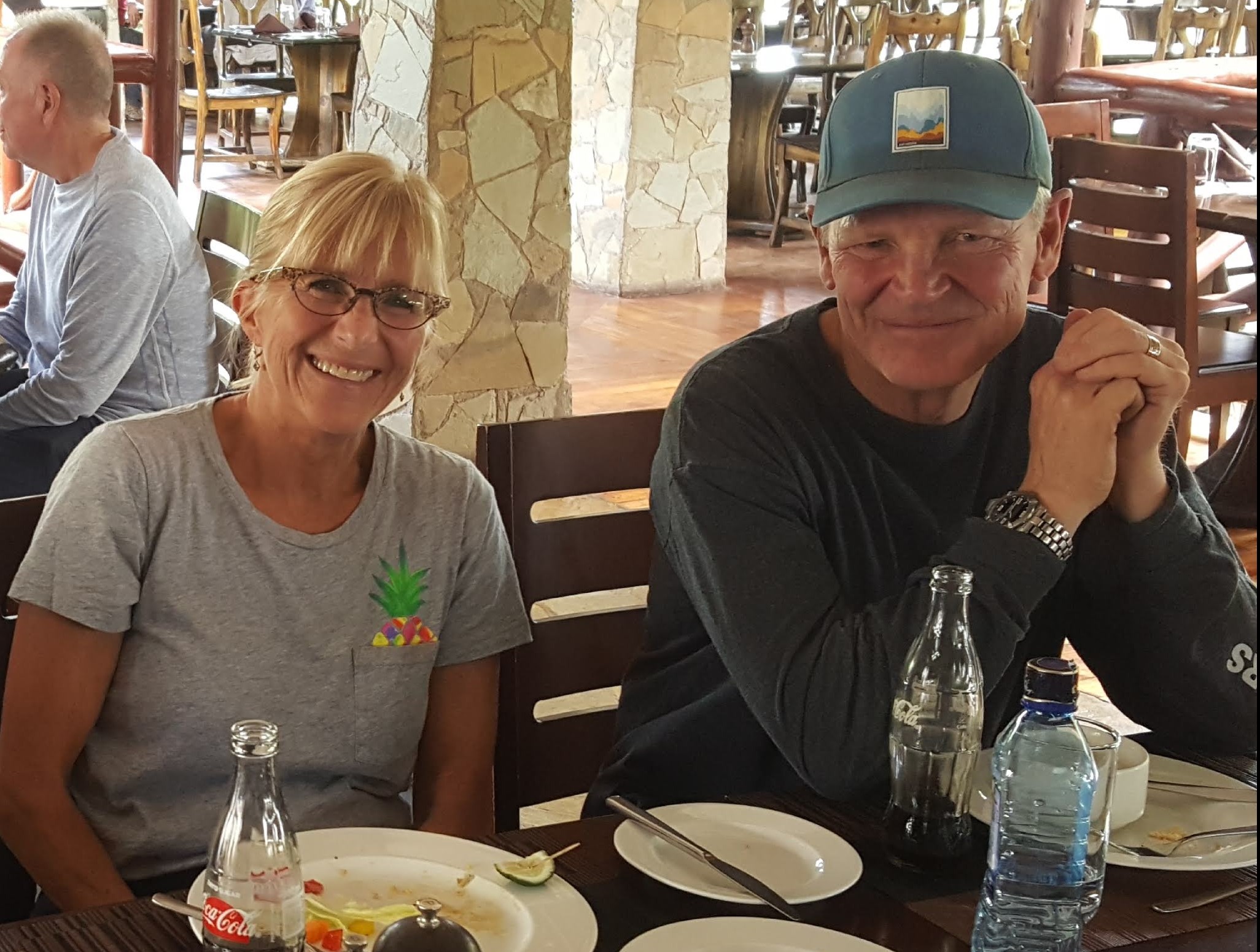
Margy and Bryce
Utahns Tom & Kathy and Bryce & Margy have been vacationing together for years, and during this trip, they, too, have always traveled in the same vehicle. The many hours we’ve spent driving around game reserves this week have provided lots of opportunities for interesting discussions and for strengthening relationships with our Cincinnati friends, so during mealtimes, we usually try to sit near those we don’t know as well to extend our circle. Perhaps what we have liked best about the tours we have taken with Discovery Expeditions and Adventures is that all of our traveling companions have been friendly, interesting, and eager to learn about new people as well as new places.
Steve and Jan (whom we had met on our Aegean cruise last year) shared a vehicle with us for our last game drive in the Maasai Mara. Knowing that this was probably our last chance to get photos of some species in the big-game bingo game, we gave Amos a list of animals we needed to fill up our cards (so to speak). One by one, he managed to track them down and put the Land Cruiser in advantageous positions for us to take good photographs.
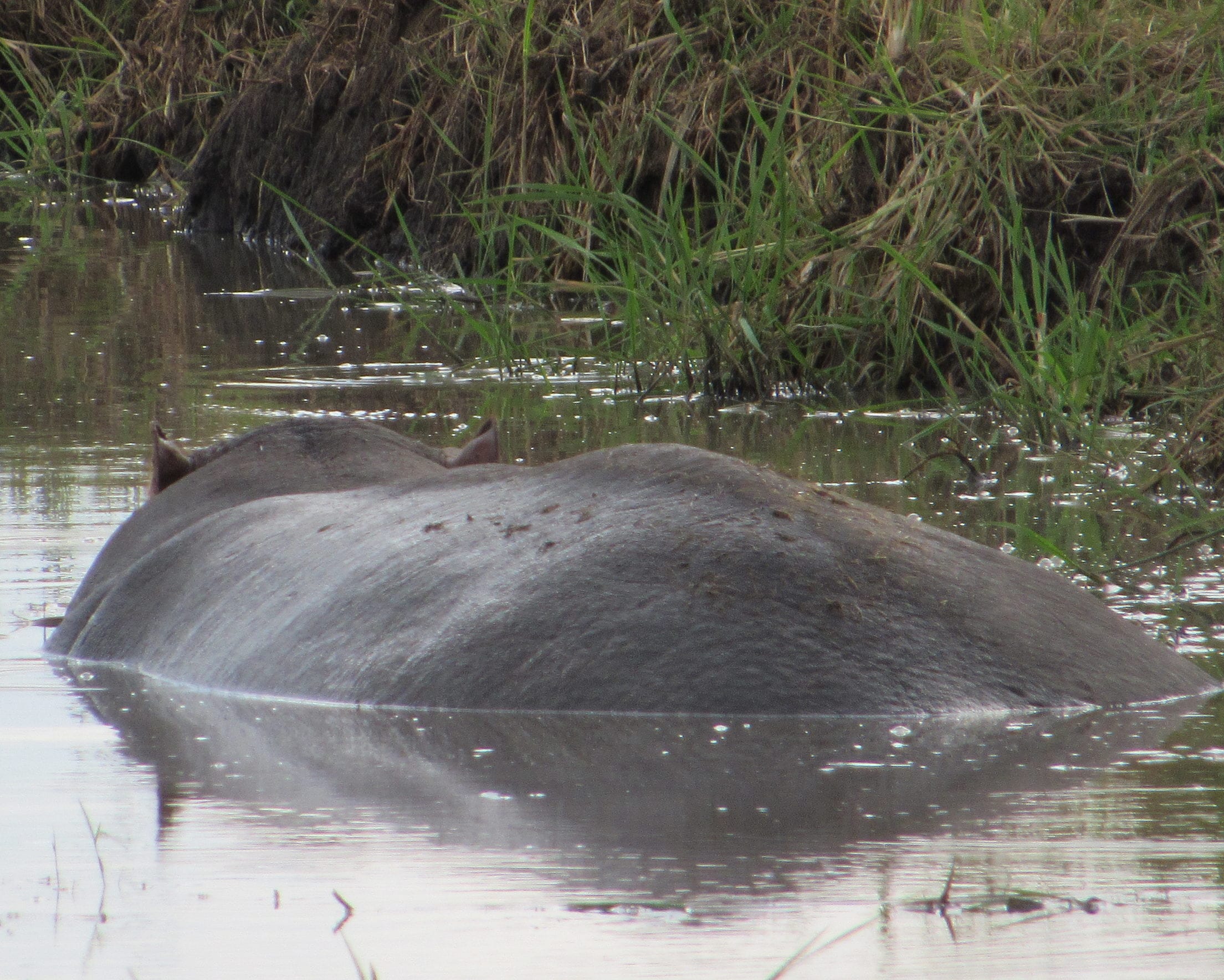
This lone hippo had wandered far from the river, but found a rain-filled ditch where it could stay moist for the day
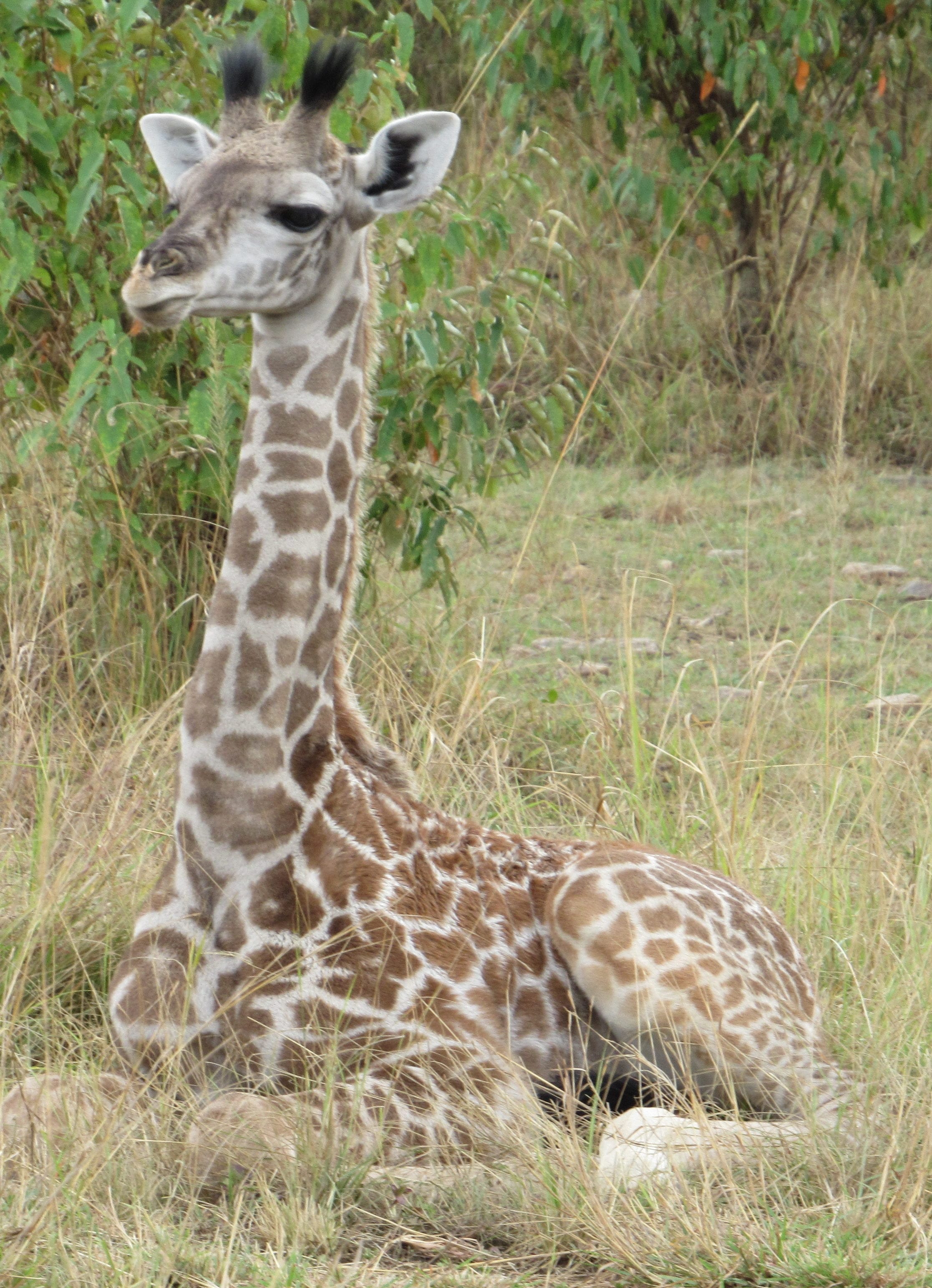
This giraffe is a baby; Maasai giraffes’ coats gradually darken as they age
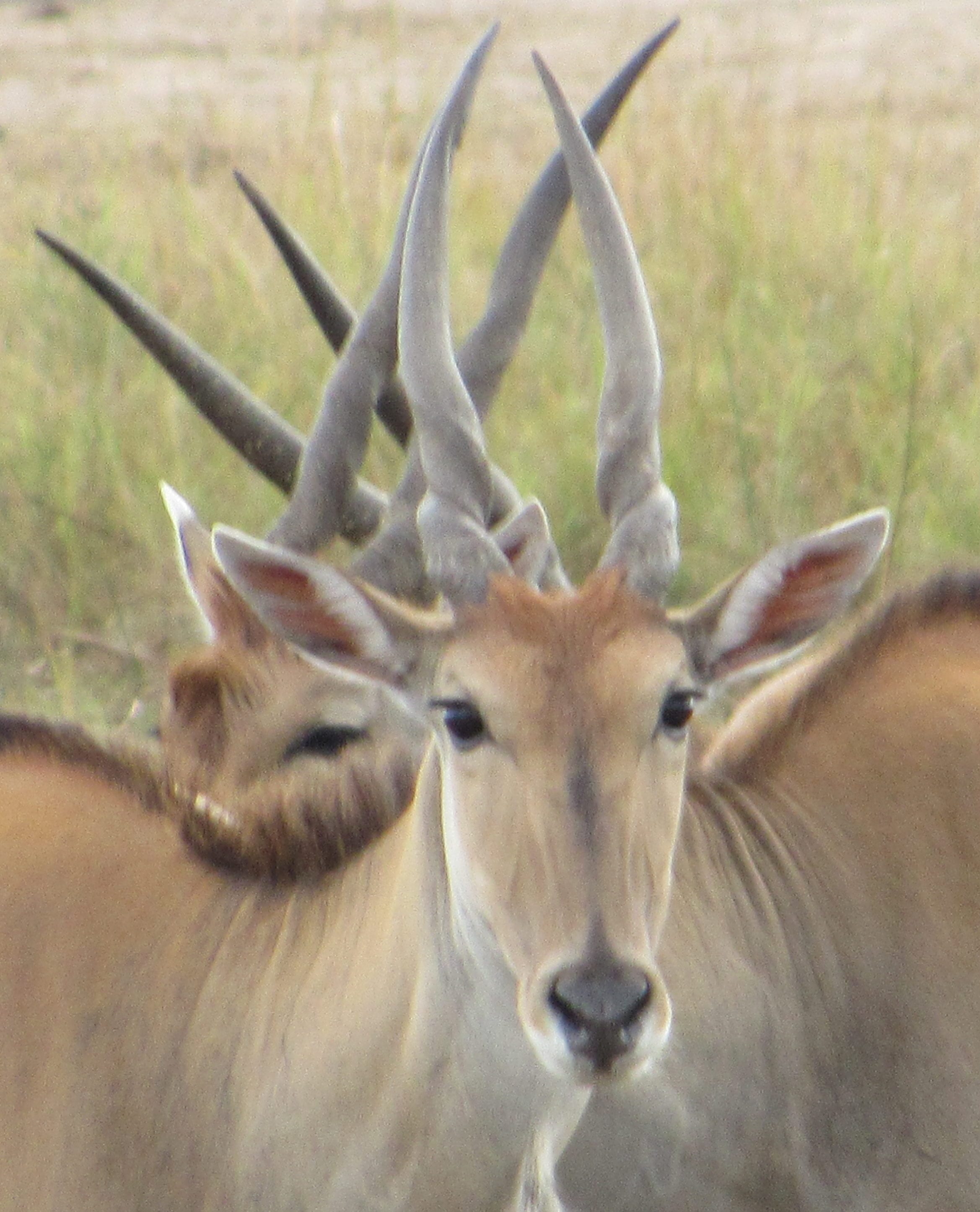
Amos told us that elands’ legs make a clicking sound when they move, but we never got close enough to hear it
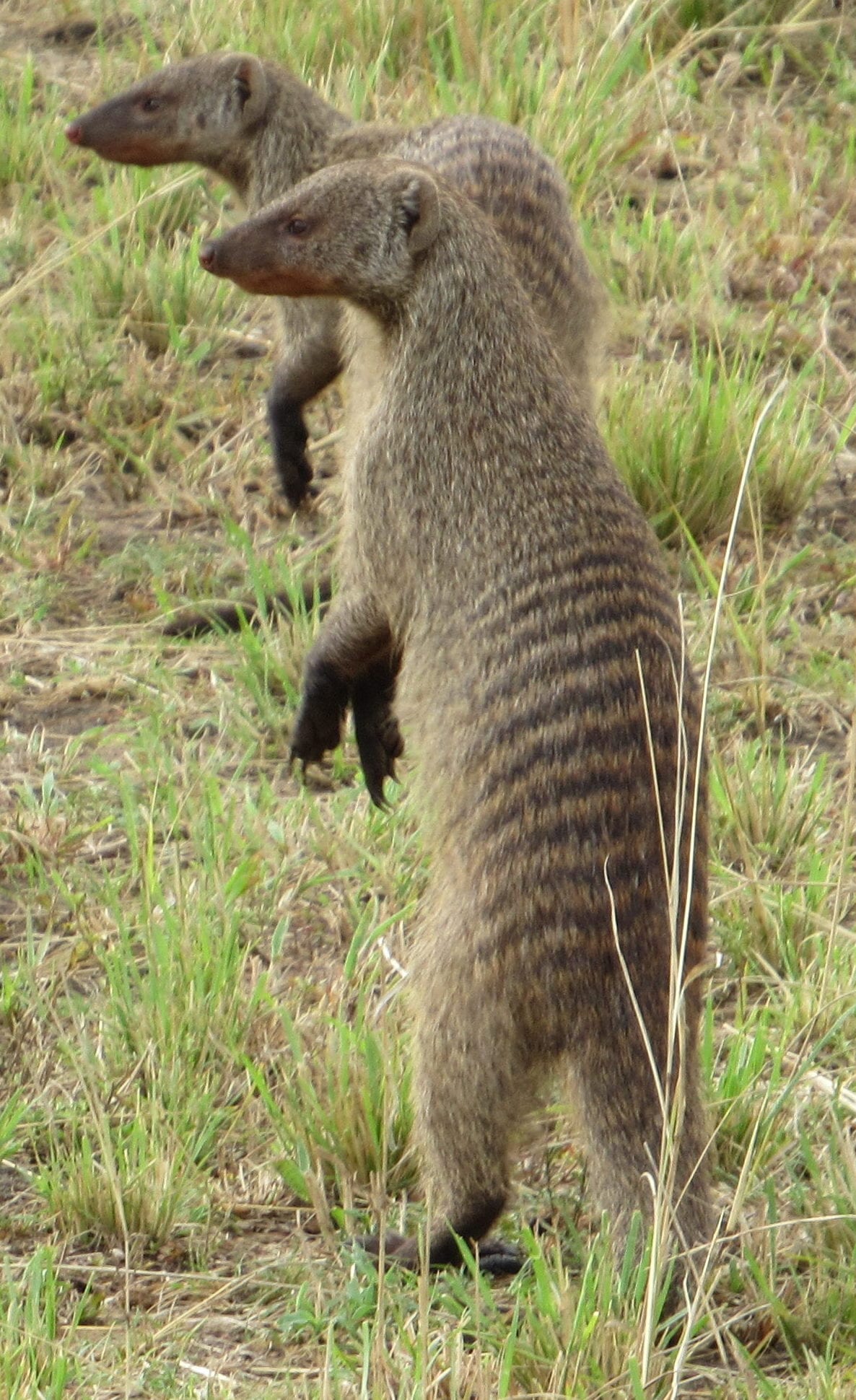
The mongooses’ squeaky chatter was much easier to hear. We watched one of them snatch and swallow a mouse
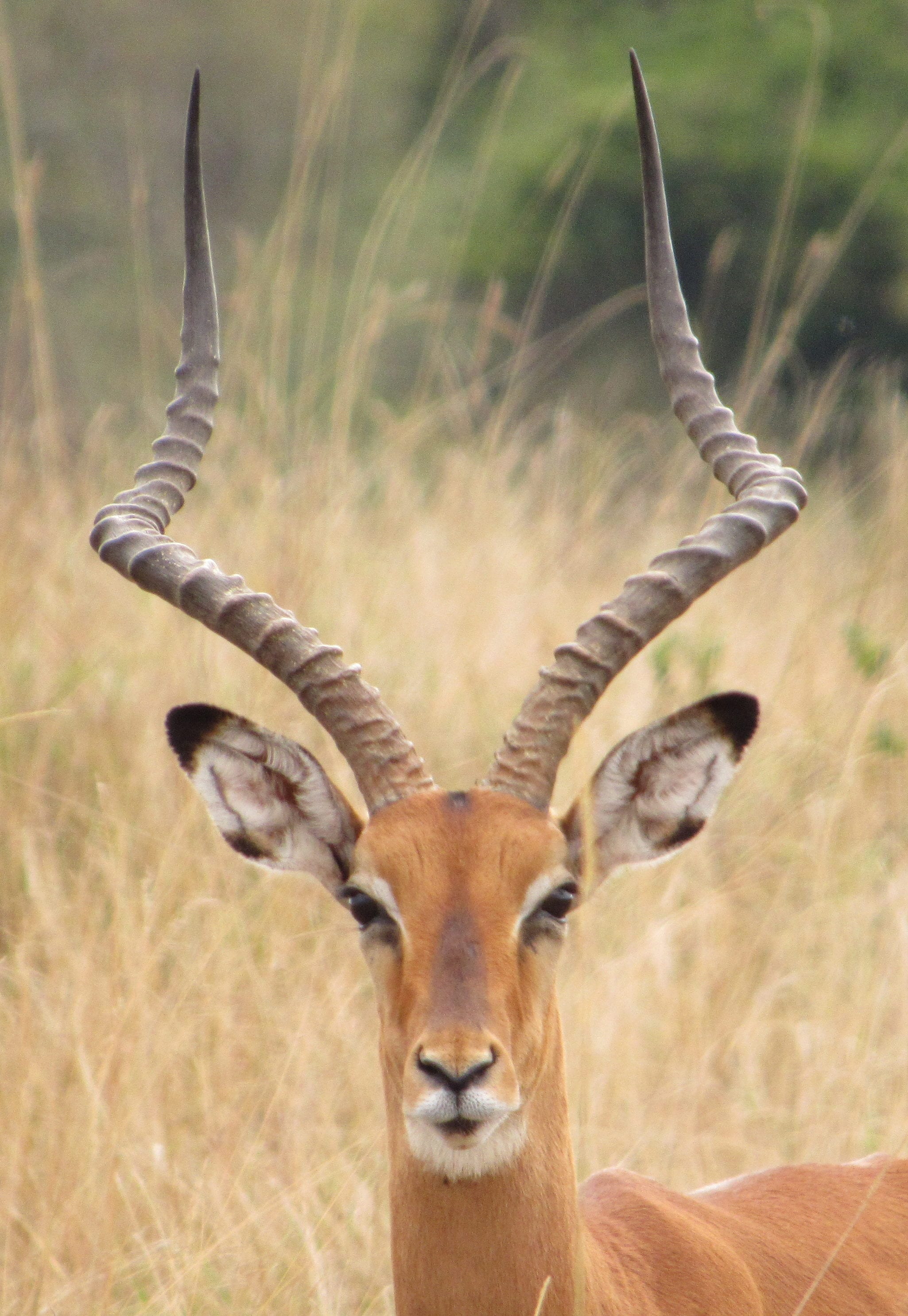
Another impala grazing near this one was missing a horn. Amos says it won’t grow back
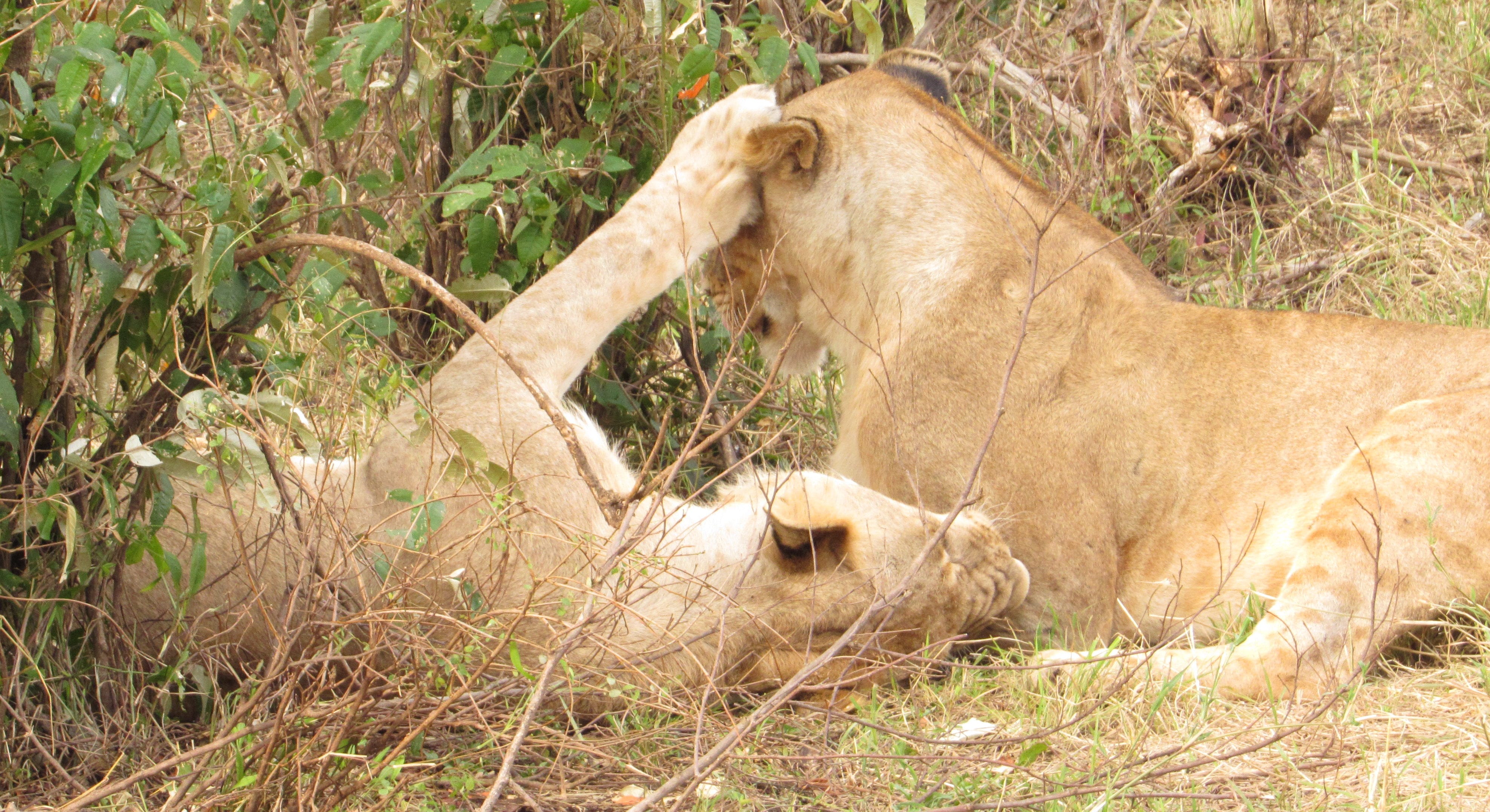
Young lions playing
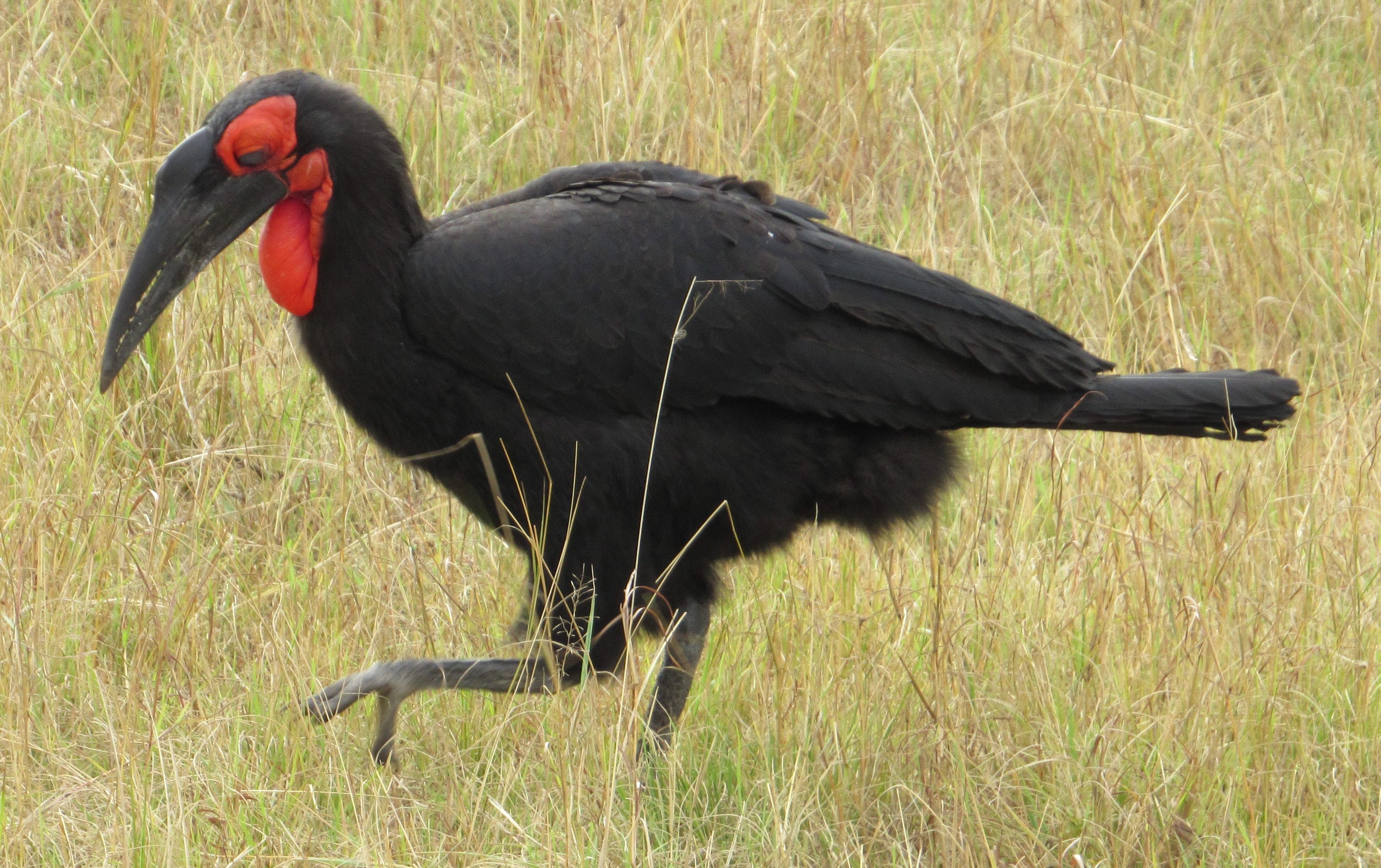
Ground hornbills are over 1 meter tall and can live up to 60 years
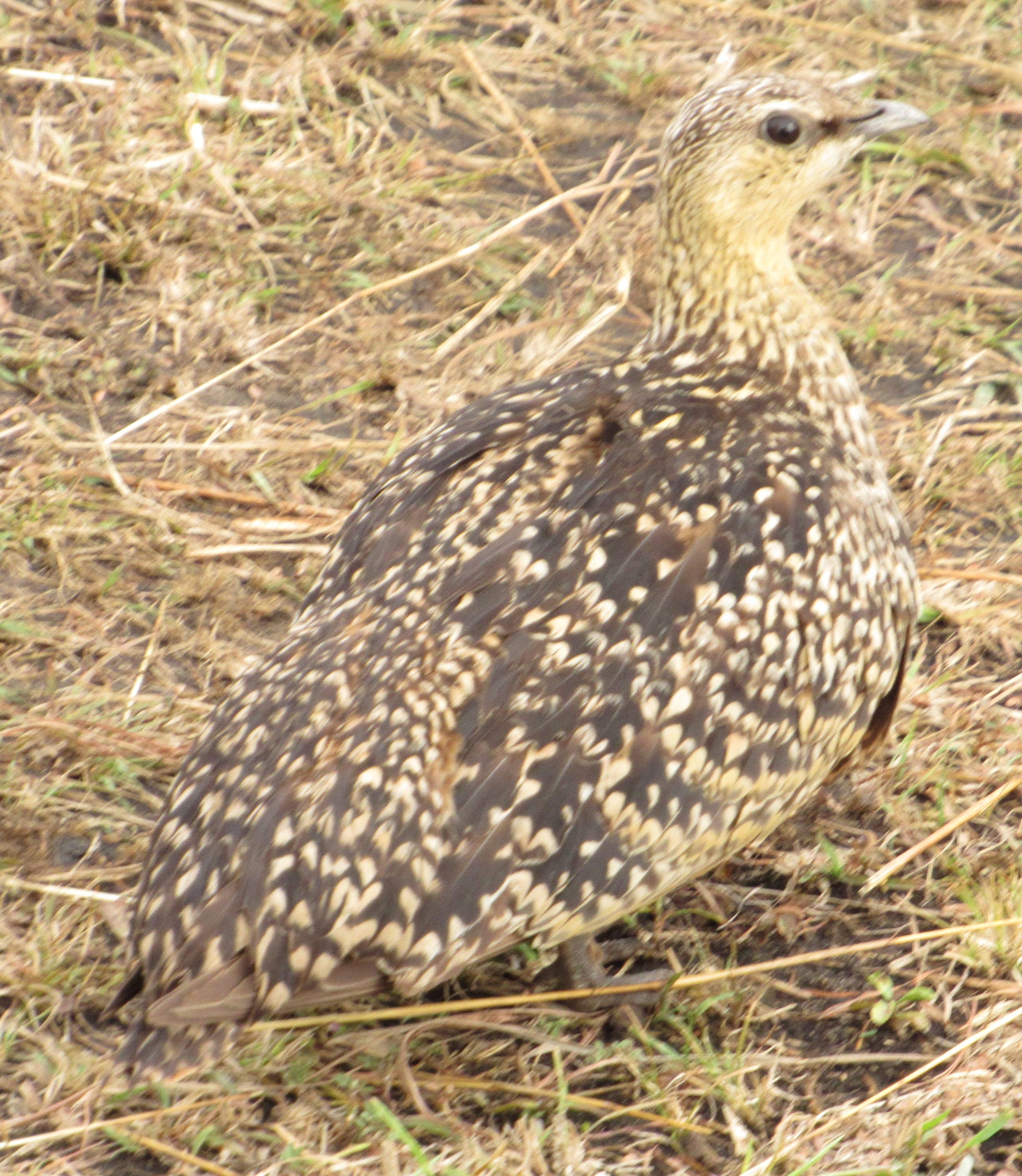
Female yellow-throated sandgrouse
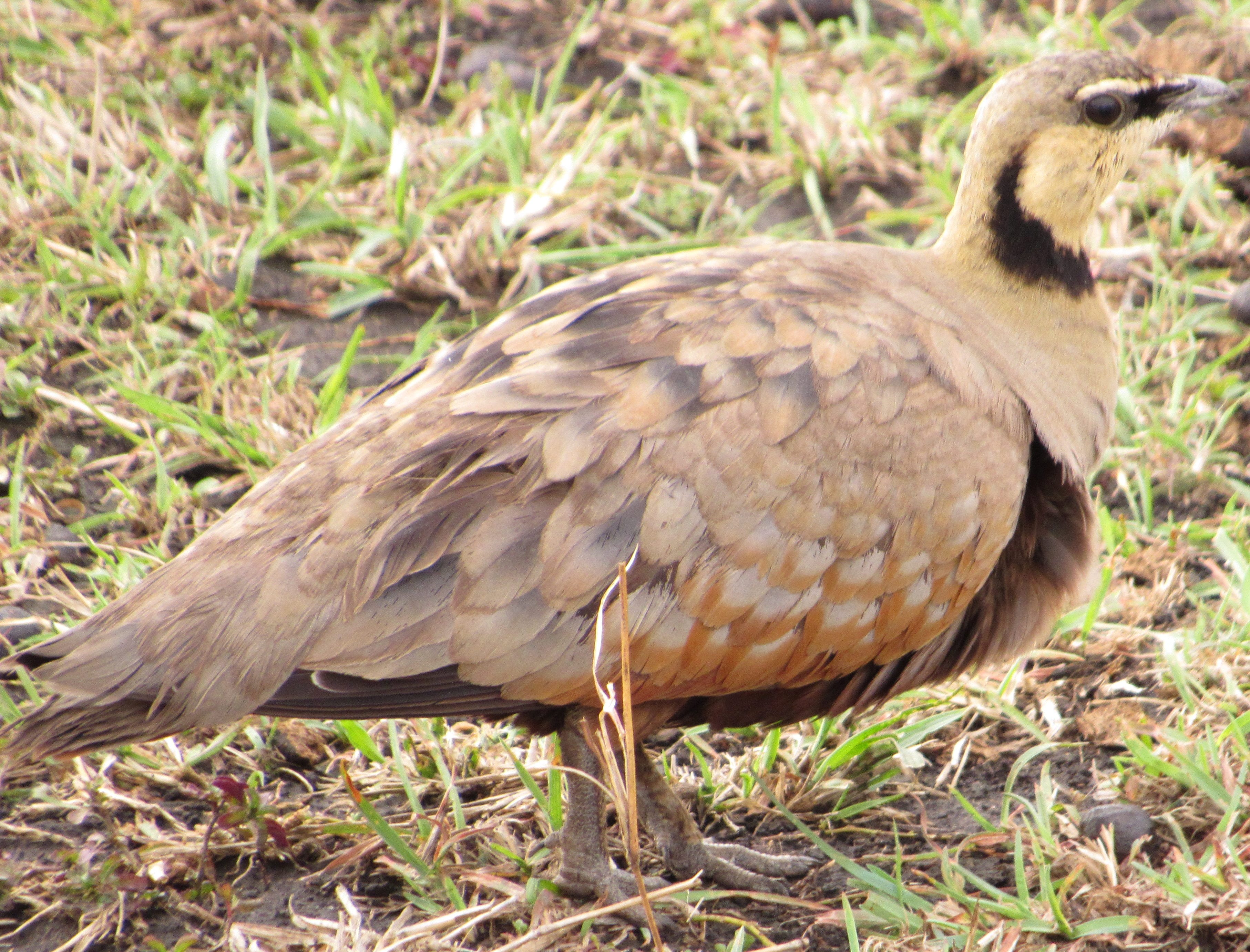
A sandgrouse can swallow enough water in just a few seconds to meet its needs for a whole day. This is a yellow-throated male

A menacing kettle of vultures swirls over some doomed beast
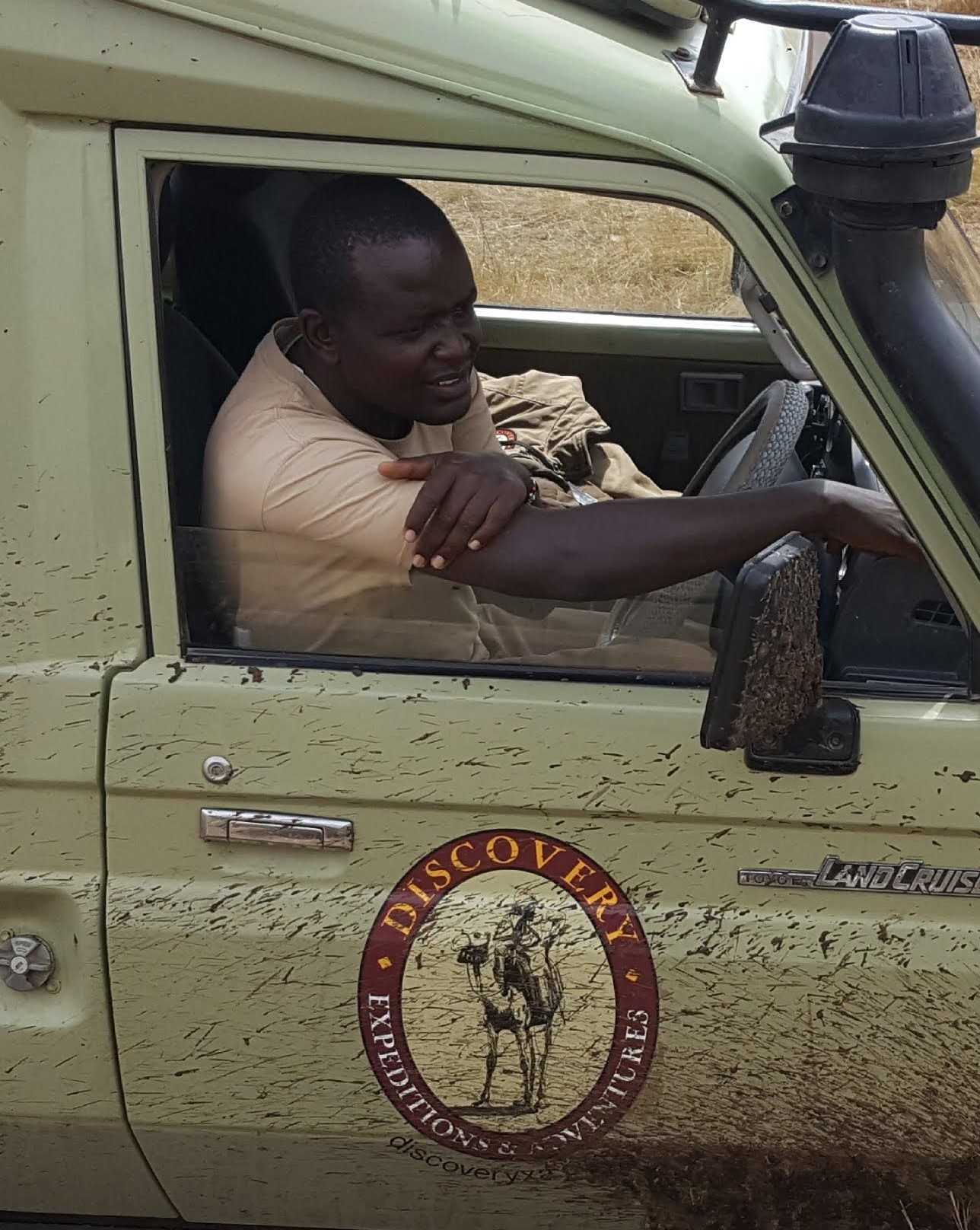
Amos at the wheel
Amos is a quiet, contemplative guy, doing more listening than talking during our drivers’ constant inter-vehicle radio conversations. He is the youngest of the six, and the newest of Discovery XA’s full-time guides, having been with the company for two years. Although he had begun studying construction engineering at university, his love of wildlife and wild lands led him to switch to a degree program in travel and tourism so that he could become a safari guide. (Certified guides must complete three years of courses in botany, geography, geology, and zoology.) In response to our questions, Amos told us that he is married and has two young children. His wife works from home as a clothing broker, buying pieces from manufacturers and importers and then reselling them to retail shops. They live in an apartment in Nairobi and are saving up to buy a house.
Amos also is a devoted Christian, having been raised in a religious home and attended church-run schools. When he repeatedly delivered on the animal photo-ops we had requested, Nancy acknowledged his amazing ability to find even the most elusive creatures by remarking, “Surely the Lord God will do nothing but he revealeth his secret unto his servants, the drivers.”
Amos smiled widely and added, “Amos 3:7.” Now we are further impressed by his knowledge of the Bible as well as of God’s creations.
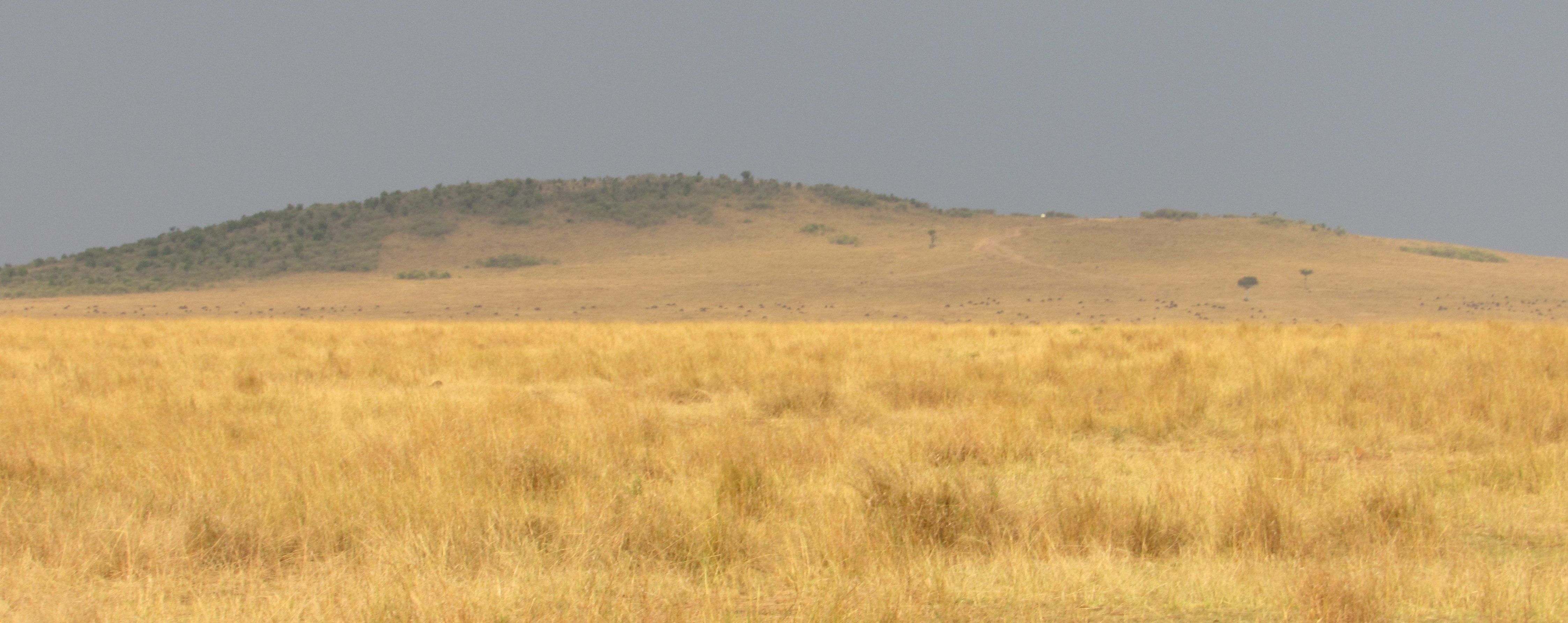
The highest point in the Mara, where we had stopped earlier in the day
About 5:30 p.m. we caught sight of a pack of young lions crouching just off the track ahead of us. As we got closer, we could see that they had surrounded a mongoose burrow and were tormenting the poor mongooses just like a housecat stationed between a mouse and its hole. Clearly, the lions were not looking for an afternoon snack, but simply amusing themselves at the mongooses’ expense: batting the little creatures around, tossing them in the air, trapping them under big paws whenever one tried to make a run for the burrow, and then letting them go so the fun could begin all over again. We must admit that the scene was amusing us as much as it was the lions, but the mongooses were not enjoying it at all. Their terrified squeals only increased the lions’ pleasure.
Suddenly, one of the tortured mongooses made a mad dash toward our vehicle, darting underneath. The lion that had let it slip by came trotting over and crouched next to us, peering quizzically into the shadows and then swiping his paw between the rear wheels–but to no avail. He walked around to the other side of the vehicle, peering and sniffing, not at all pleased that his plaything had escaped, and apparently unable to reach it. Curious about what was going on, the other two lions came over to investigate, circling the vehicle several times until they finally gave up and went back to crouching near the mongoose burrow. The first lion had settled down next to the Land Cruiser, watchful eyes focused underneath. We wished the Land Cruiser had been equipped with a glass bottom so we could see how the mongoose was reacting under such surveillance.
After a while, Amos decided to shake things up a bit. Starting the engine, he moved the vehicle forward about two car-lengths. We all looked back, expecting to see a mongoose scurrying to keep up with us–but there was no mongoose.
“It must have climbed up into the undercarriage,” Amos surmised.
Shortly after that, we saw another vehicle approaching from behind. It was Jackson, who slowed to let his passengers watch the action around the burrow, which had picked up again after the arrival of a fourth lion. Just then, another mongoose seized the opportunity to make its own dash for safety under the second Land Cruiser, but Jackson moved his vehicle at a critical moment and the second mongoose unexpectedly found itself in the open, with three lions on its tail. It managed to run under Jackson’s vehicle just in time, and Amos said he saw it climb onto the rear suspension.
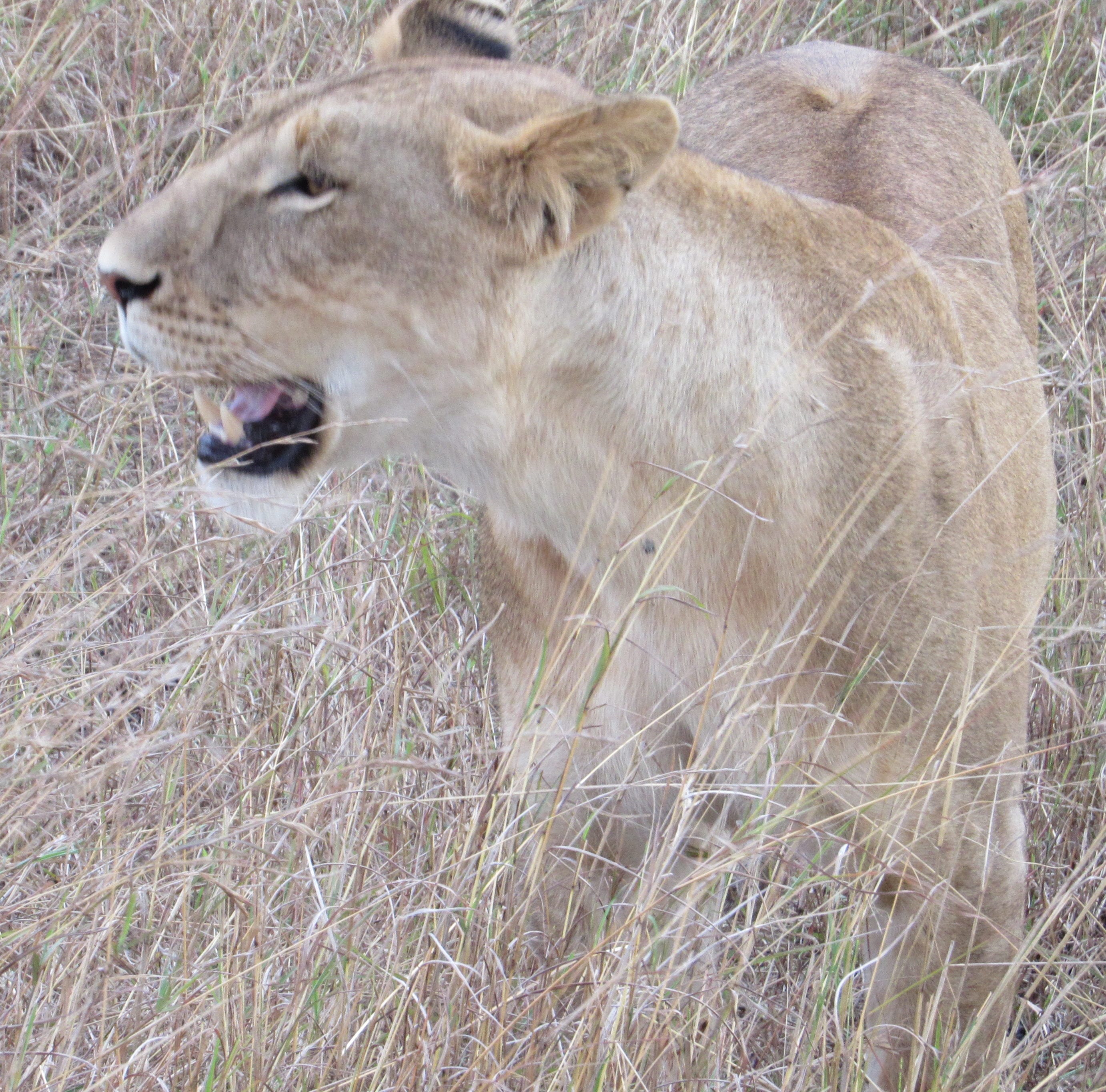
Not too happy lion who had lost his plaything
All four lions abandoned the burrow and took up stations on either side of our vehicles. Then they waited. And waited. And we waited with them.
When nobody had moved after about twenty minutes, Amos and Jackson decided that we had seen everything we were likely to see of this cat-and-mongoose game, so they started the engines and we headed back to the camp. Although we were keeping watch, we never saw a mongoose emerge from under either vehicle. Just before we reached the camp entrance we heard distinct mongoose squeals rise from under the floorboard. At that point there was nothing we could do but smuggle two mongoose stowaways into the Ashnil Tent Camp along with the two Land Cruisers.
It began raining heavily again just after we returned. Over dinner, we enjoyed telling the rest of the group about the melodramas we had seen presented today by the Maasai Mara Players, but otherwise our evening was much like last night: wet and blustery, with even spottier wifi service. We went back to our tent, repacked our bags so we could be ready to leave by 7 a.m. tomorrow, and turned in early.
Leave A Comment